Resources Index
-
Design Ventura Judging Panel 2015
This year’s Design Ventura Pitch day is on Monday 7th December.This is when our top 10 shortlisted school teams will come to the Design Museum to present their product ideas to our judging panel of design experts.
This year our judges are:
ANGUS MONTGOMERY
Angus Montgomery is the editor of Design Week, a title that provides breaking news and in-depth analysis of the trends that shape the design world and showcases the most interesting new design work. He is a former managing editor of the Architects’ Journal and reporter at the Press Association.
CHRISTOPH WOERMANN
Christoph is Managing Director, Global Head of Marketing, Global Transaction Banking at Deutsche Bank. Christoph has a passion for garden design and has been an ardent supporter of the Design Ventura project and a seasoned member of the judging panel.
EDWARD BARBER
Designer Edward Barber is co-founder of design studio Barber & Osgerby. Their diverse body of work spans industrial design, furniture and site-specific installations as well as limited edition pieces. Public commissions include the London 2012 Olympic Torch and projects for the Royal Mint. In 2007 they were awarded Royal Designers for Industry by the Royal Society of Arts and in 2013 the designers were each awarded an OBE for their services to the design industry.
NAOMI CLEAVER
Naomi is an interior architect and designer specialising in homes, from private residences to student accommodation, hostels to holiday villas. Naomi is also a writer and broadcaster dedicated to promoting the good news of good design.
REBECCA HOSSAIN
Rebecca, Head of Retail at the Design Museum, has 15 years’ experience in retail management including working for BRAC the largest NGO in Bangladesh, running her own fair trade retail partnership, and management roles at Tate Modern, Farrow & Ball and the National Portrait Gallery.
SEBASTIAN CONRAN
Acting as our head judge Sebastian studied Industrial Design Engineering at Central St. Martins, where he gave the Sex Pistols their first booking and designed the record sleeves and posters for The Clash. After working at corporate identity consultancy Wolff Olins and leading hard-goods development at Mothercare, he founded Sebastian Conran Associates design studio in 1986, which he continues to lead.
Sebastian has taught furniture design at the Royal College of Art, lectures frequently and judges many international design awards.
-
Photographing your product or prototype
As you begin to prepare your Design Sheets for entry to the Design Ventura competition, you will invariably be thinking about how you are going to present your ideas visually. Drawings work really well to show your design concept, and diagrams and technical illustrations to accompany your written explanations will show exactly how your product works.
A prototype/mock up of your product is a great way of showing our judges how your design will work and how it will look, so please make sure you include photos of these prototypes if you can. Here are some tips for taking a great product photo:
Natural Light
Set up a table near a window for your photoshoot – sun diffused through cloudy skies or a white sheet makes an excellent setting for a product photo. Really bright direct sunlight or a camera flash create strong dark shadows and make products look less attractive.Background
Use a big piece of paper or a plain colour piece of cloth as your background to make your product really stand out. To create a seamless sweeping backdrop, stick your piece of paper to the wall and drape it over the table in front and then place your product on top.
Learn how to create a seamless backdrop in this tutorial from Fstoppers.
Tripod
Set your camera or phone up on a tripod to make sure the image won’t be blurry. If you don’t have a tripod, improvise! Find a place to rest your camera and use the timer setting to make sure the photo isn’t affected by shaky hands. Sometimes, even a steady hand can create a blurry photo, so find away to rest your camera securely on the table for the optimum shot.Perspective
To really help the Design Ventura judges understand your design, it is a good idea to take photos of your product from a couple of angles. If it opens, show it open and closed. If it has a great design on the other side, make sure to take a photo of that.
Photos are a great way of telling your products story – Globe Academy’s Design Ventura entry for a foldable plate, Dish Dash, used photographs to help explain how the product worked.
-
What’s in a (brand) name?
Picking a good brand name is an important part of developing your product’s brand. A good name will help your customers identify and differentiate your product from others. Your products name should be easy to notice and recognise, with a clear and obvious meaning. You should not need to explain what the name means or why it has been chose. It should be selected very carefully as it captures the key theme of a product in an efficient and economical manner.
Brand names are not necessarily associated with the product. For instance, brand names can be based on places (Air France, British Airways), animals or birds (Red Bull, Dove soap, Puma) or even people (Victoria Beckham, Alessi).
A check list for a good brand name
Is your brand name:- Unique and distinctive?
- Easy to pronounce, identify and remember?
- Representative of your product’s qualities and benefits?
- Suggestive of what the product does?
If you have time
You could conduct consumer research to see what your target market thinks of your brand name. It is important that when they see or hear your brand name, they are able to identify what the product is and does and they should be able to pick up on any key messages you wanted to convey. It would be helpful for you to give them an idea of the price and to show them the product, so that they understand the purpose of the brand name and the context in which it will be used.You may also want to consider if your brand name is easily convertible into foreign languages, and whether it would portray negative or wrong meanings in other categories. For instance NOVA is a bad name for a car, in Spain, because in Spanish it means “doesn’t go”.
-
Wheelys Product Development
Students from Finchley Catholic High School had their first meeting with Kin Design Studio, who they will be working with to develop their Design Ventura 2015 product Wheelys to get it ready for sale in the Design Museum shop.
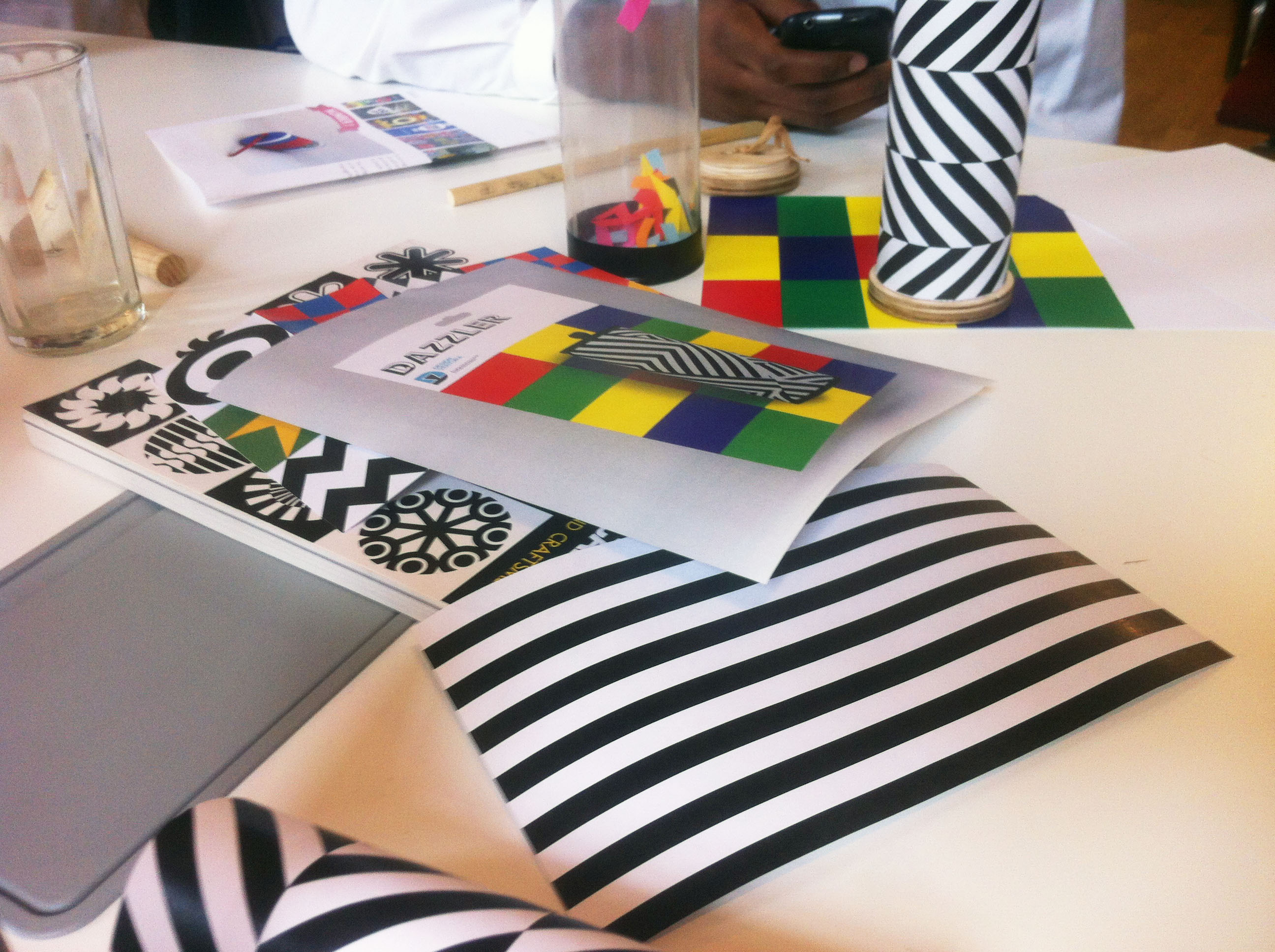
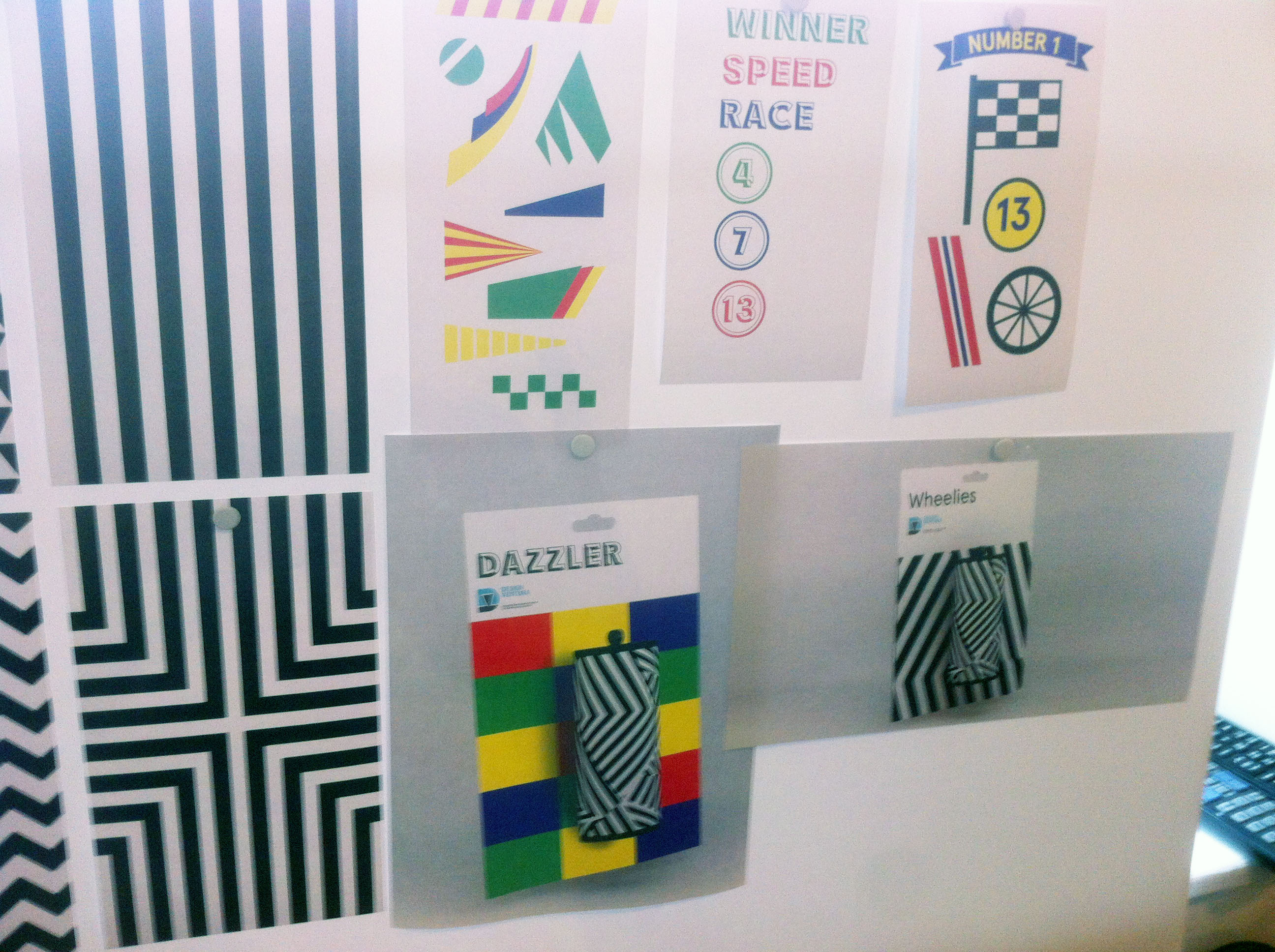
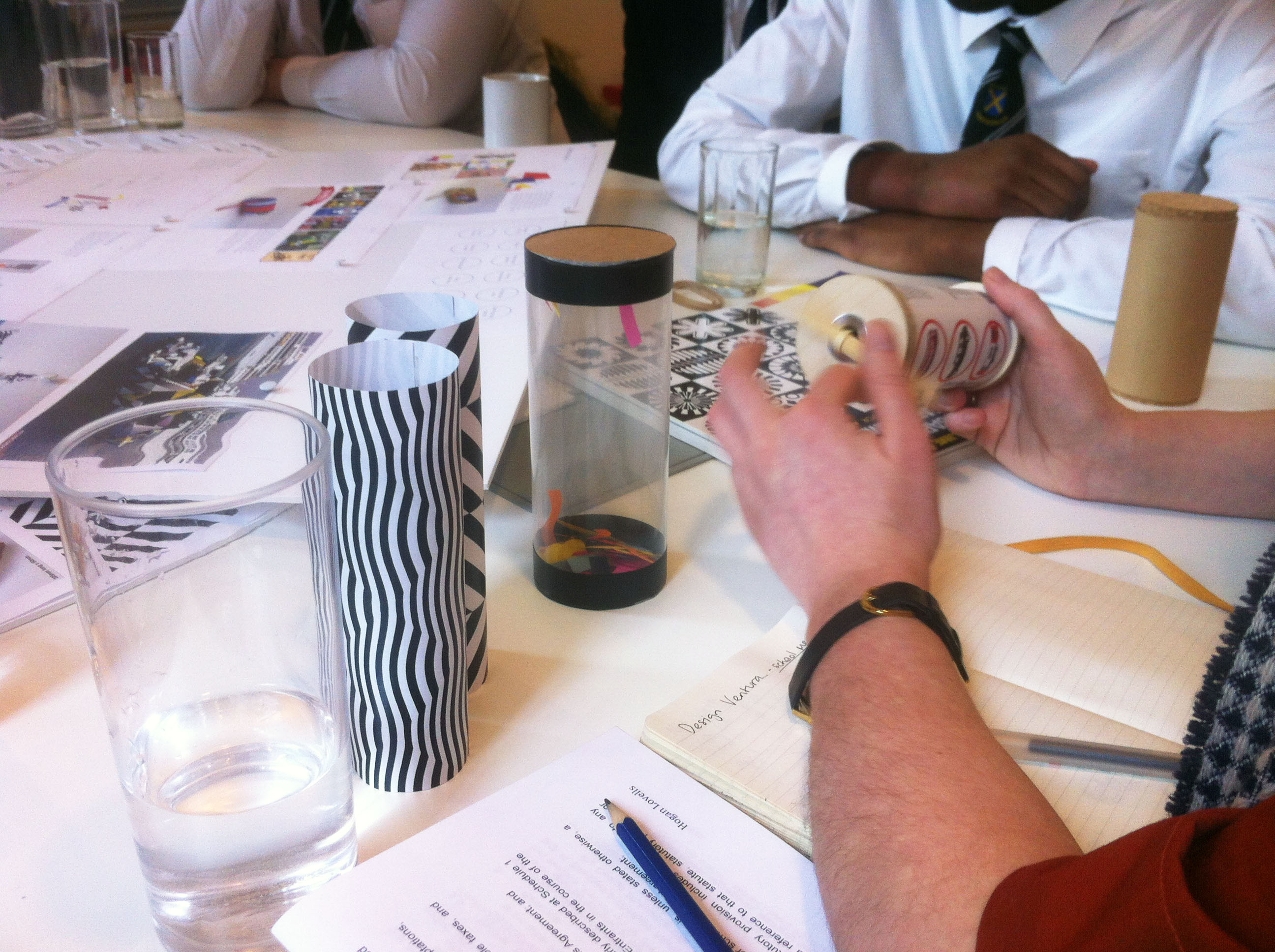

Students had an opportunity to feedback on three design path options Kin had developed. With the students’ input, Kin are now working on developing the chosen design route further. Watch this space as students and Kin work in partnership to get Wheelys ready for sale in the Design Museum shop.
-
Winning Product 2014 – Kard’lapse
Our Winners from the 2014 Design Ventura competition were Burnage Academy for Boys in Manchester, with their product Kard’lapse. The Burnage team followed the 2014 brief “connect” to design a new construction game with connecting pieces.
Kard’lapse are fun coloured acrylic discs that allow you to connect playing cards together to create connected sculptural structures. The only limit to what you can create is your imagination!
Here is their competition entry, including their entry form:
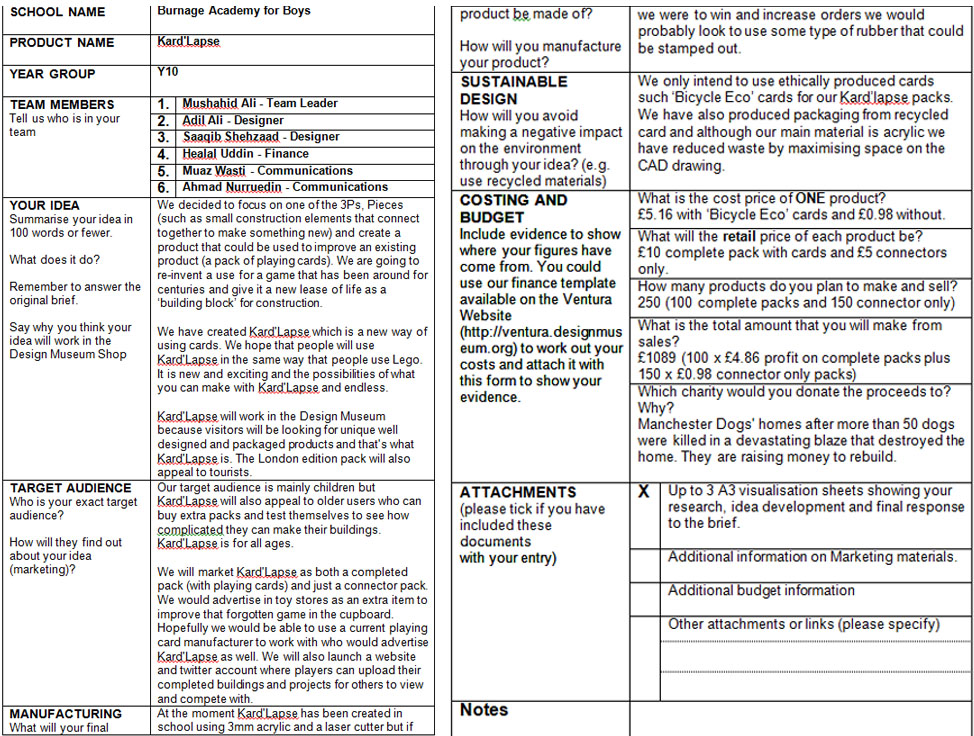
and 3 x A3 design sheets:
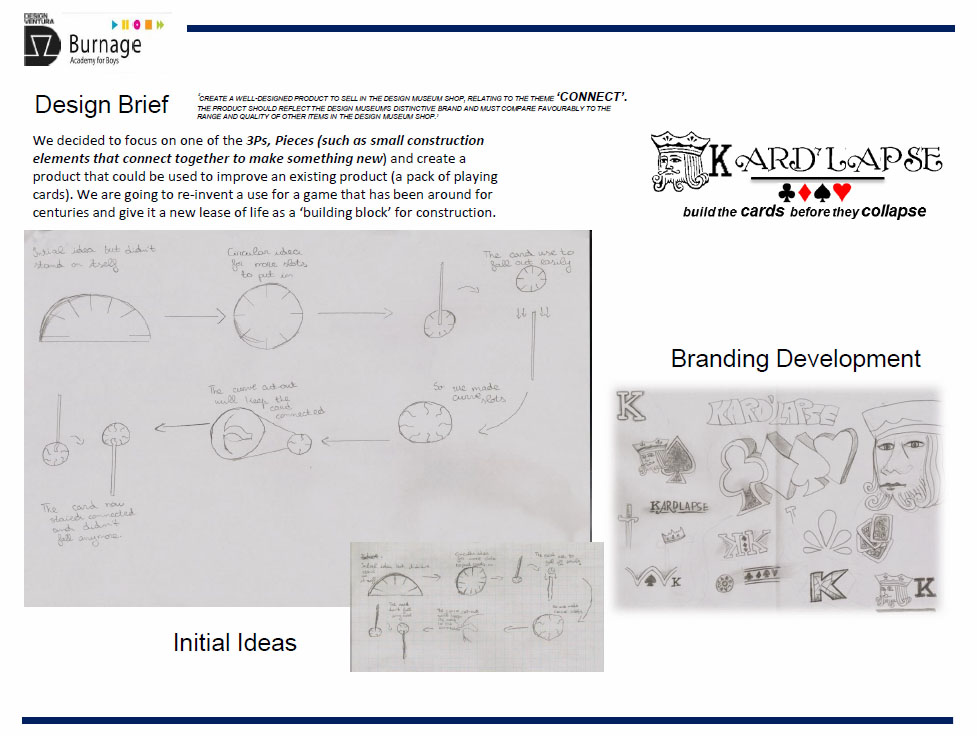
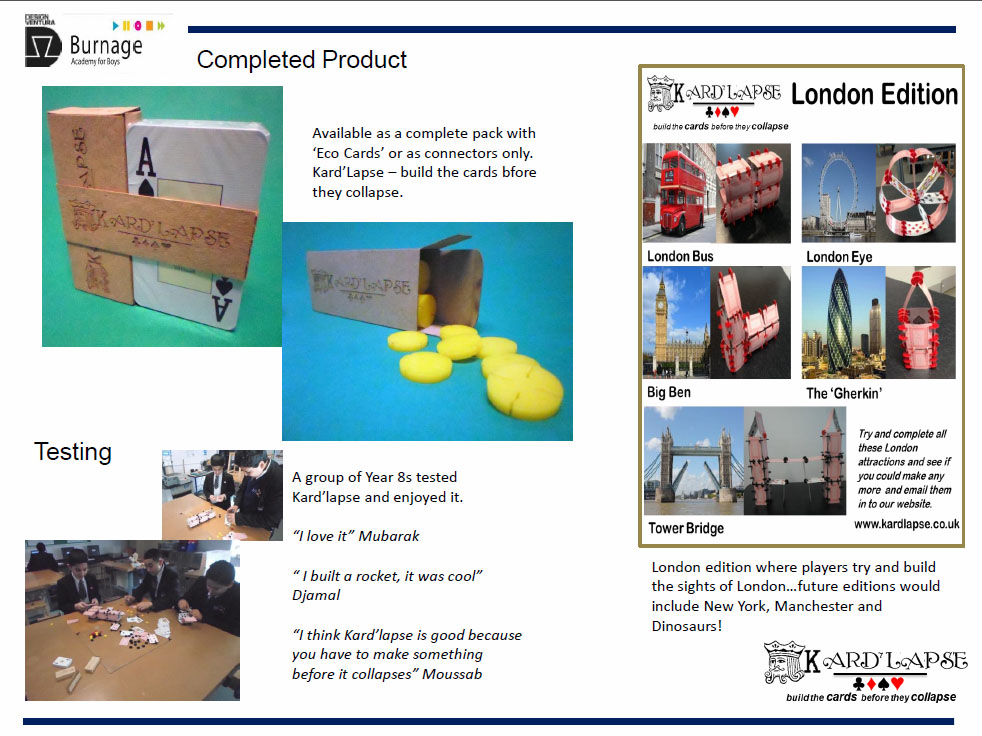
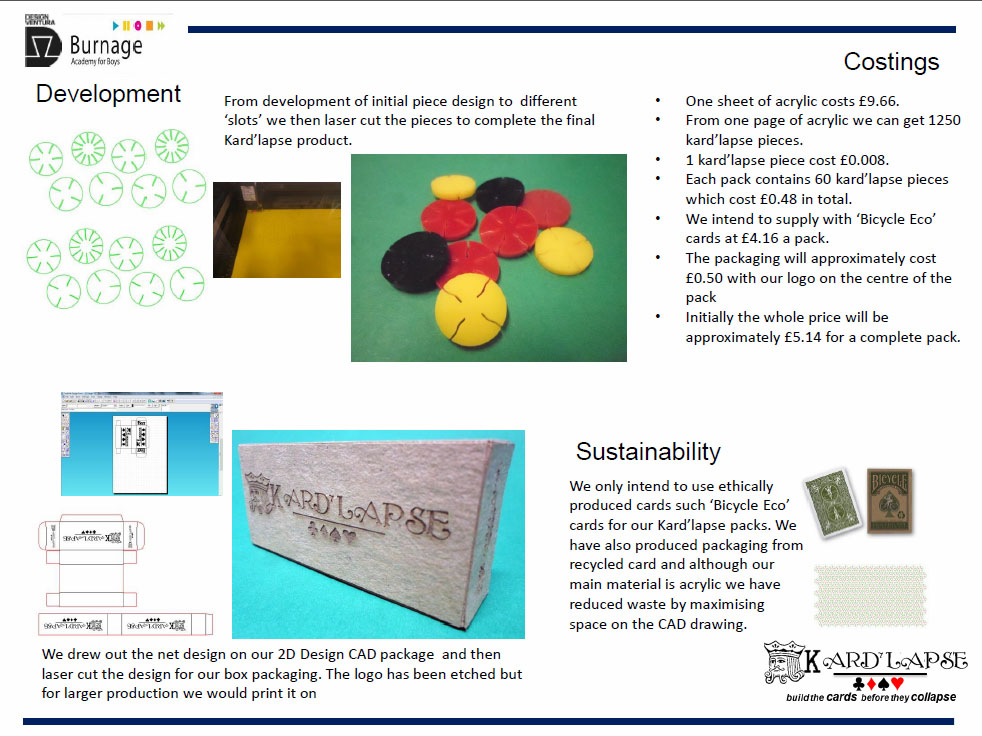
On the strength of this entry, the team were shortlisted to attend a pitching event at the Design Museum with 9 other top teams from around the UK. Below is their prototype for Kard’lapse and a short film about the pitching day, where students pitched their ideas to design industry experts and Design Museum staff:
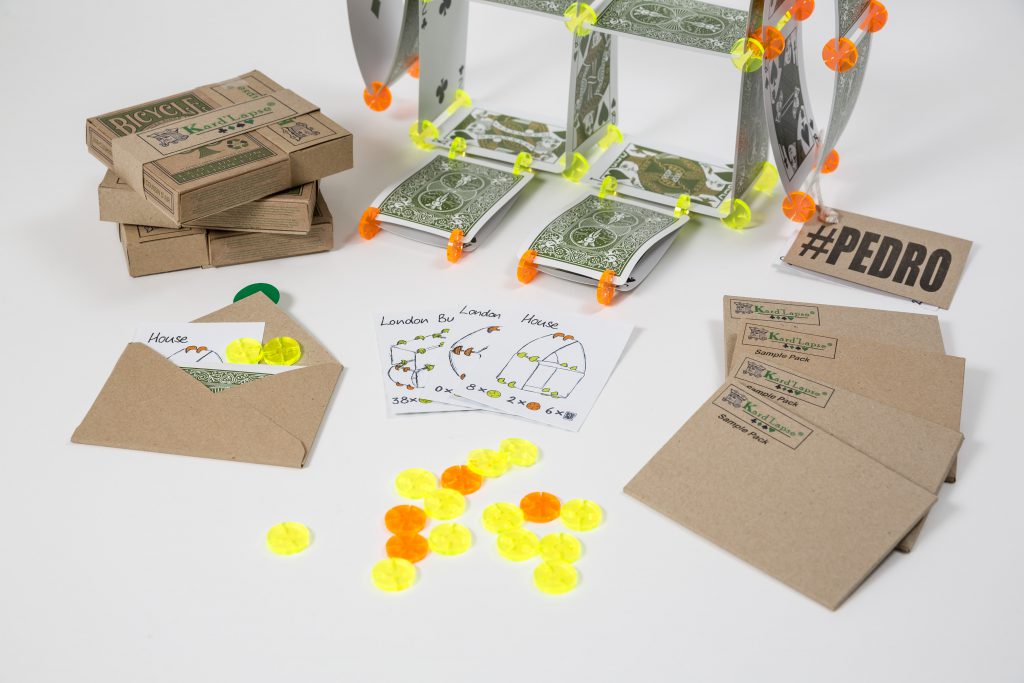
On the strength of their pitch, Burnage Academy’s idea was chosen as the Design Ventura 2014 winning product. In February 2015, the team attended a celebration event and were presented with a Design Ventura trophy.
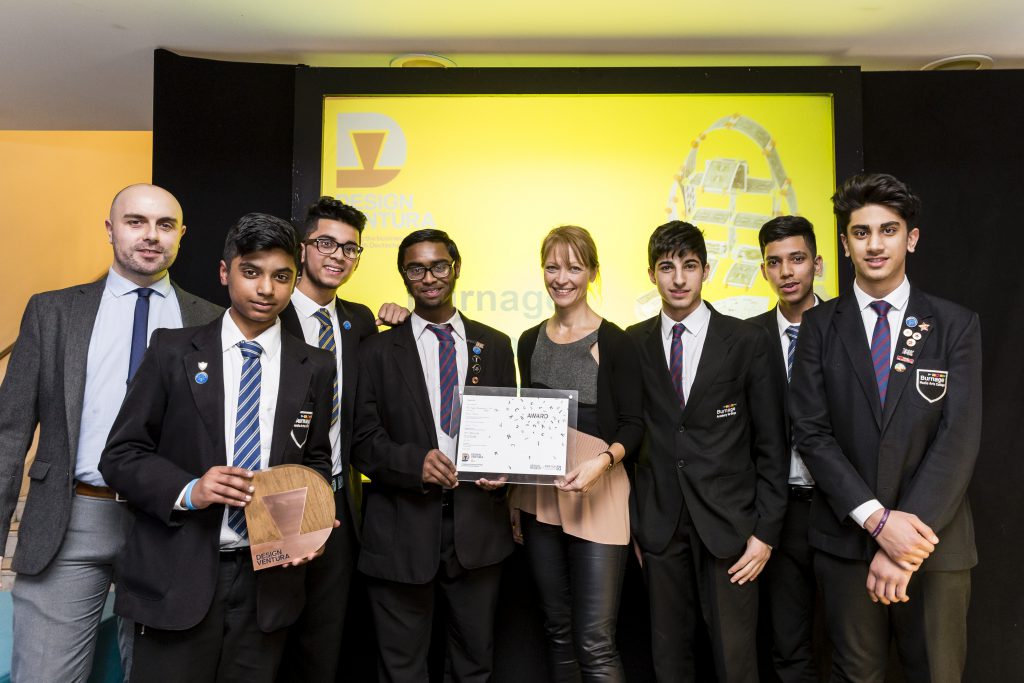
They went on to work with Giles Miller Studio to develop their idea into a market ready product. This involved changing the packaging and developing the name of the product to Card Cogs.
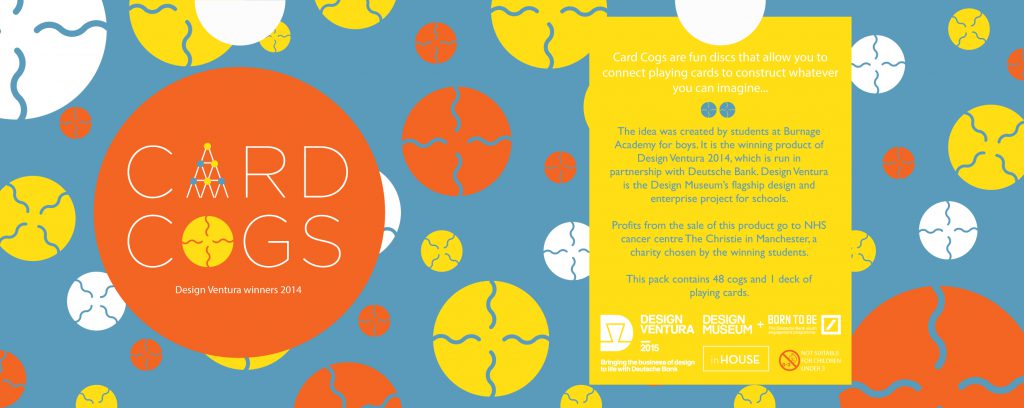
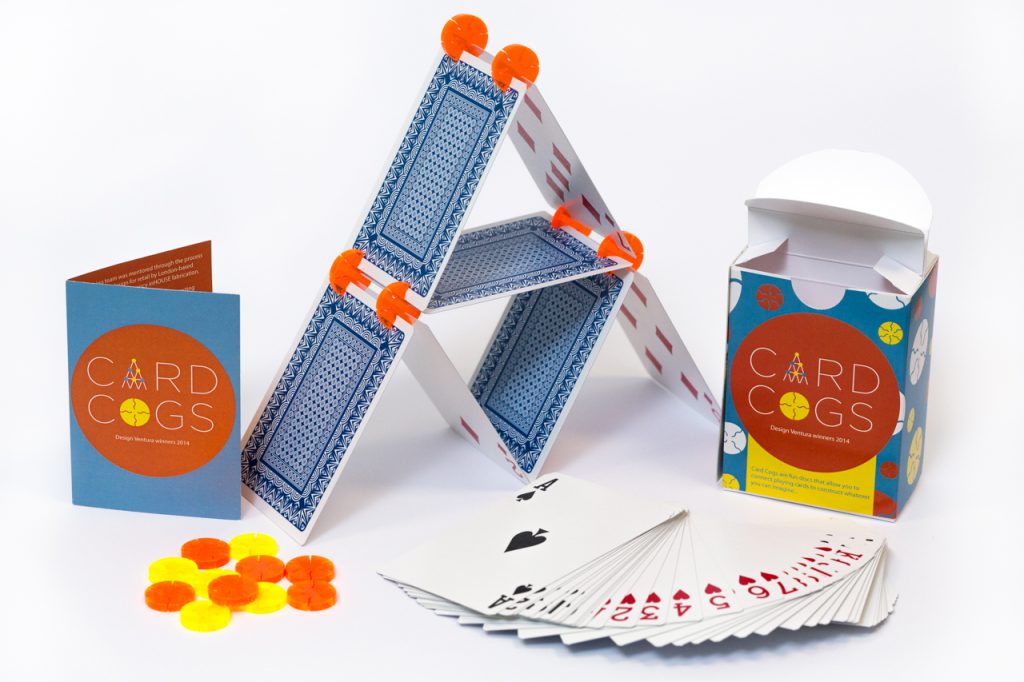
Burnage Academy for Boys packaged their product ready for their launch at the Design Museum Shop on 3 July 2015.
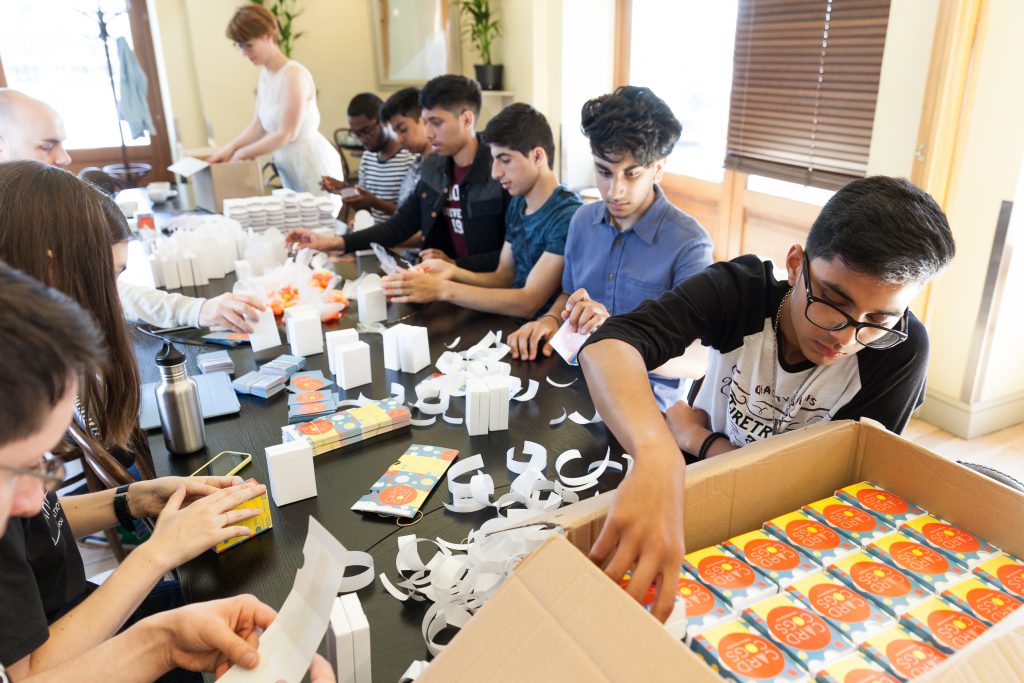
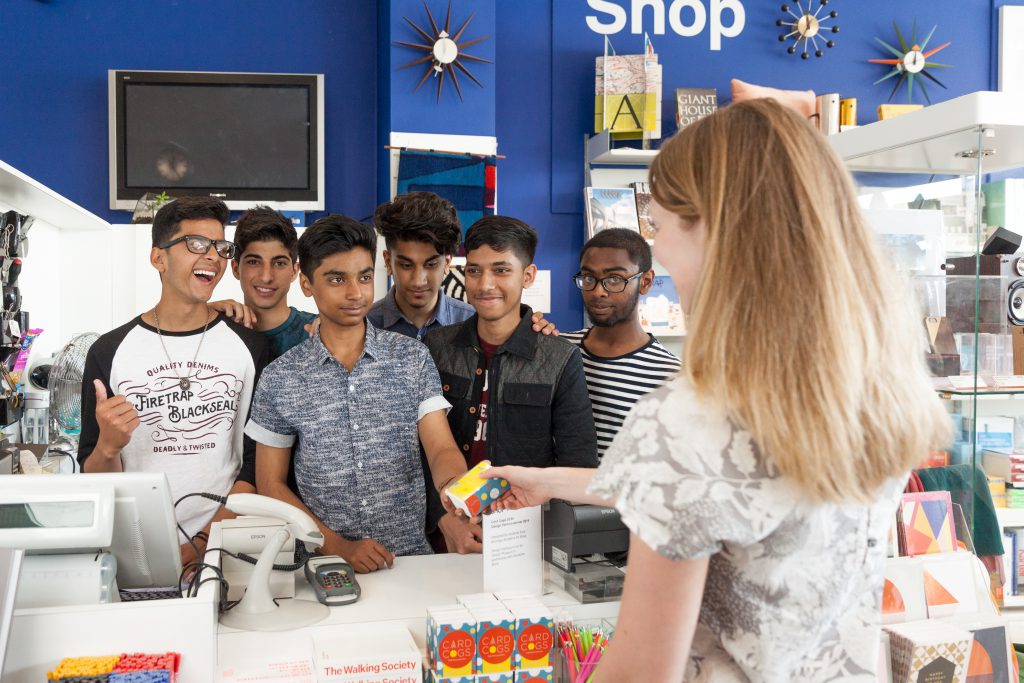
The team also had the opportunity to take their product to the Deutsche Bank Office and test their sales skills.
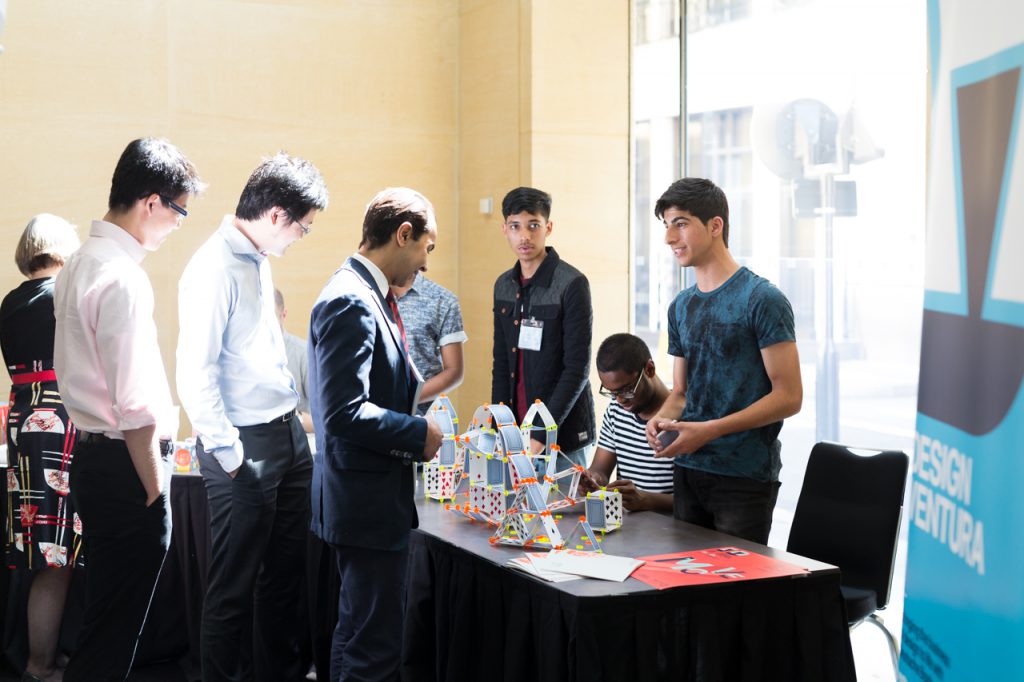
Since its launch, Card Cogs has become a Design Ventura best seller. The team returned for the Celebration Event 2016 where they presented a cheque for £1,864 to their chosen charity, The Christie in Manchester, an NHS cancer centre.
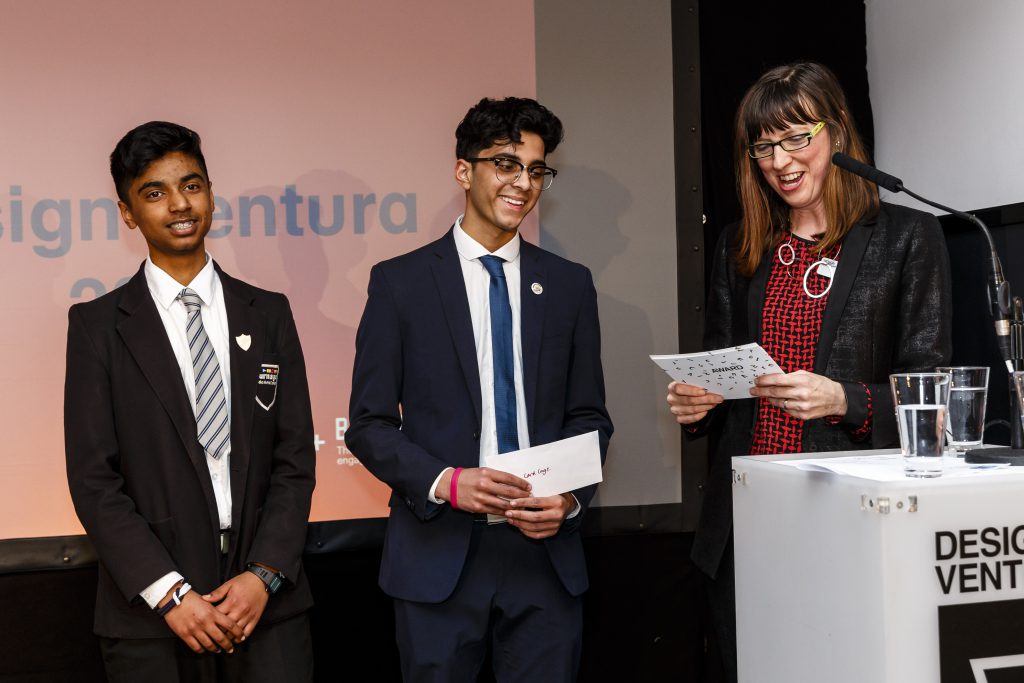
-
How to attract your target audience through design
Hopefully by now you’re well on your way to developing and refining your chosen ideas. During my school workshops I saw some really good beginnings of drawn and sketched designs. Here is my advice on how to use design to attract your chose target audience; consider this both from your product and a packaging design perspective.
My two key areas I will talk about here are ‘colour’ and ‘packaging’. I’ve picked a few examples of projects as reference for you. One thing to note on both of these areas is to keep things simple; the more complicated you make the look of your designs and packaging, the less chance your audience is going to want to pick it up in the Design Museum’s shop and, ultimately, buy it.
Colour
There are many ways to use colour in your designs and packaging, so try out plenty of options.Colour can be a tricky area for designers as colours can mean different things to different people and not all colours are effective as when you would expect them to be. For example, pink is a colour traditionally known to appeal to a female audience, but take a look at what cycling brand Rapha have done to utilise pink in their packaging, which mainly attempts to appeal to a male audience. The subtle use of the pink makes the products feel premium and looks well designed; not all use of colour has to be bold.

On the other hand, a bold single colour on your designs and packaging can help your product stand out against others on the shelf. Take a look at how food brand Makers & Merchants brand and package their products; simply just with the use of a bright red colour which is striking and looks appealing.


Packaging
By not over complicating your packaging, your audience will quickly and easily be able to see your product and figure out its function.When designing your product’s packaging, think about how much packaging is actually needed. You will have spent lots of time designing and refining the actual look of your product, so perhaps minimal packaging could be used to attract your audience in the Design Museum’s shop.
A few great examples of this are firstly from Mustang jeans, who actually used their jeans as the outer wrapping when a customer ordered a pair from their online shop.


Secondly, take a look at the Turbo Flyer toy, a wooden snap-out aeroplane toy which is housed in minimal packaging which reflects the design of the product itself.



By Industry Expert Paul Jenkins
-
Design Ventura Shortlisted Schools 2014
Congratulations and thank you to all Design Ventura schools that have completed the project and submitted an entry. Our panel of shortlisting judges have selected the top entries from the 241 schools who registered to take part, the shortlisted schools will be invited to pitch their idea to a panel of judges here at the Design Museum in early December.
All schools that have submitted an entry will receive participation certificates in the post and also feedback from the panel. The shortlisted schools will be contacted separately with details of the pitching event.
Here are the Design Ventura top ten shortlisted schools for 2014:
(in alphabetical order)
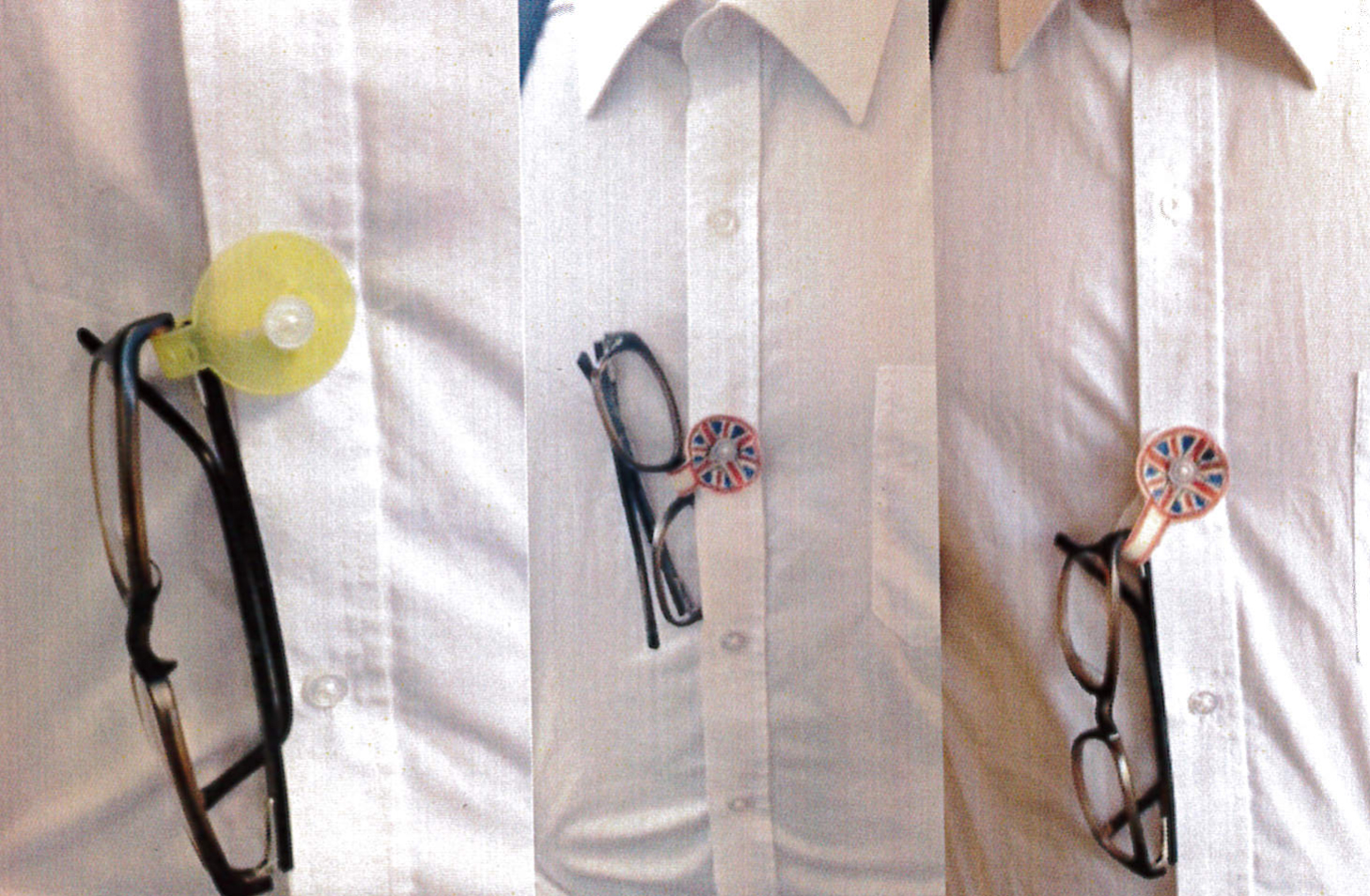
Bishop Douglass School, Finchley
Speck Hoops
A button on hoop for carrying spectacles on your shirt fron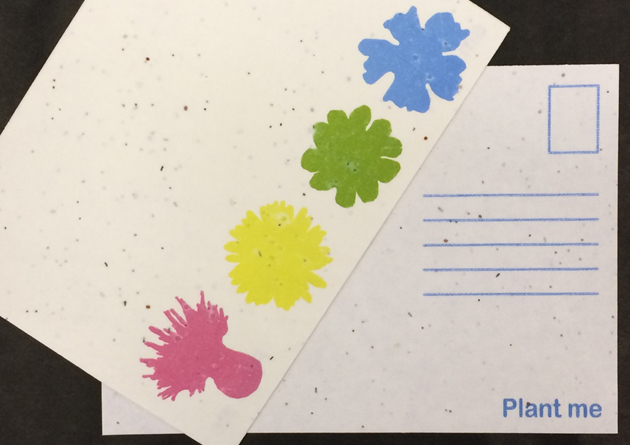
Bullers Wood School, Chislehurst
Enviro-Card
A modern take on the traditional postcard – using seed paper with wildflower seeds.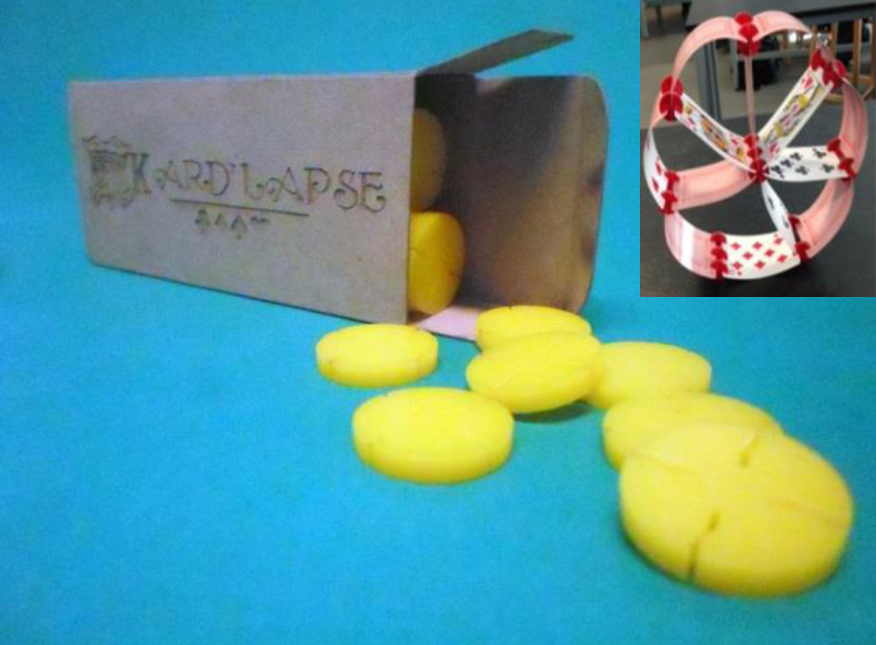
Burnage Academy for Boys, Burnage
Kard’Lapse
Plastic elements that connect playing cards to enable users to build structures.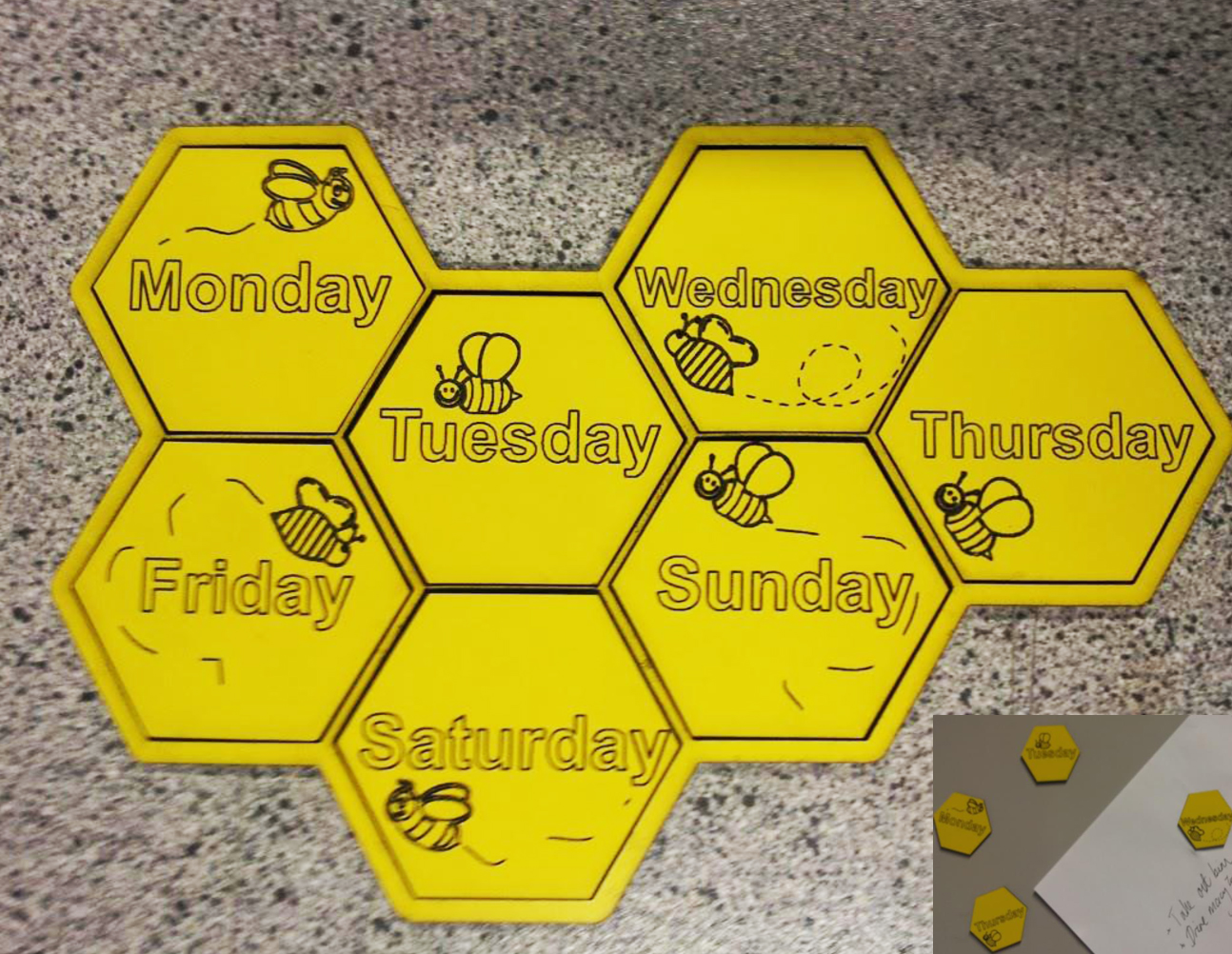
Chislehurst and Sidcup Grammar School, Sidcup
Bee Organised
Bee inspired magnet organisers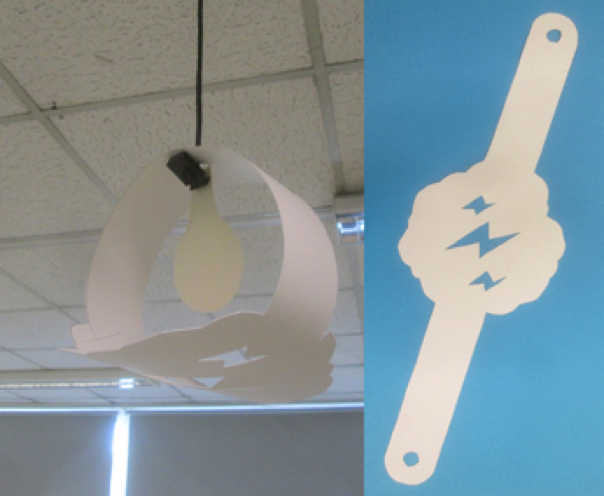
Orleans Park School, Twickenham
Plumage
Interchangeable light shades for casting shaped shadows in children’s rooms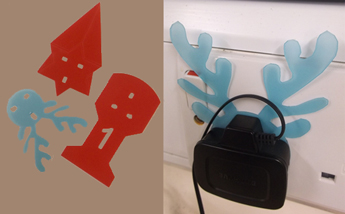
Ryedale School, Nawton
Signal
System for identifying different chargers and cables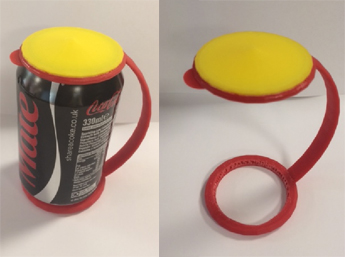
Selly Park Technology College, Birmingham
Can Cap
Handy lid and handle for cans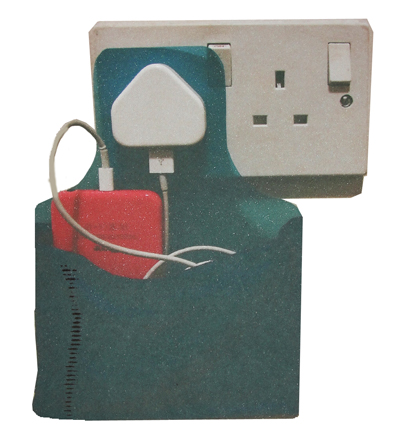
St Laurence School, Bradford-on-Avon
Socket Pocket
A home for your phone – a pocket to hold mobile phones whilst charging them at a power socket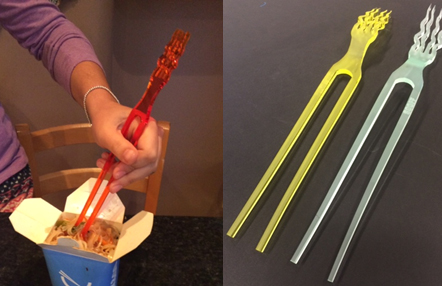
The King’s School, Chester
ScoffStix
No challenge chopsticks, with an integrated fork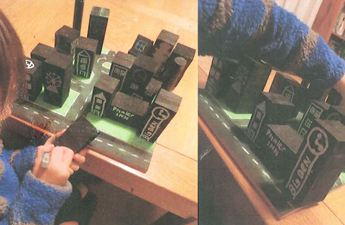
Yateley School, Yateley
Blackboard City
Interactive magnetic game on a blackboard where players can customise their cityscape. -
Squeezeys now available in Design Museum Shop
Yesterday the team from Weald of Kent Grammar School came in to the museum to assemble their product and launch it in the Design Museum Shop.
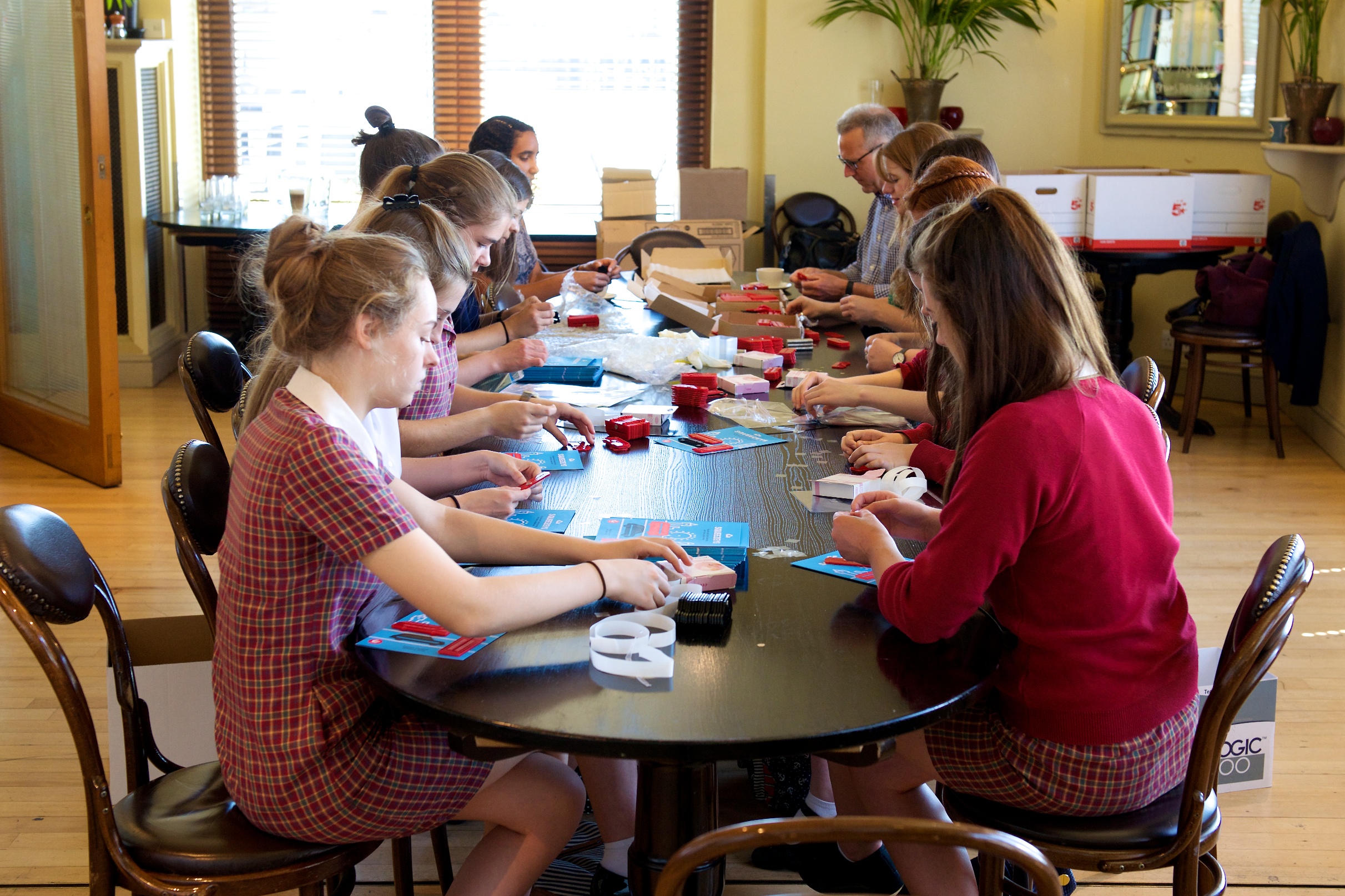
Squeezeys was the winning idea of Design Ventura 2013, answering the brief to design a product for sale at around £10, responding to the theme of ‘handy.’
All profits from the sale of Squeezeys will go to the team’s chosen charity, The Brain Tumour Charity.
-
Second place St Olaves students meet designer Giles Miller
On Monday we had a visit from the Linear team from St Olaves school in Orpington. The team came second in Design Ventura 2013 with their wooden, laser cut wallet.
Their prize was a day with top designer Giles Miller to discuss the possible development of their product. Giles’ work focusses mainly on surface design and he brings a wealth of knowledge on design and cutting-edge production techniques.
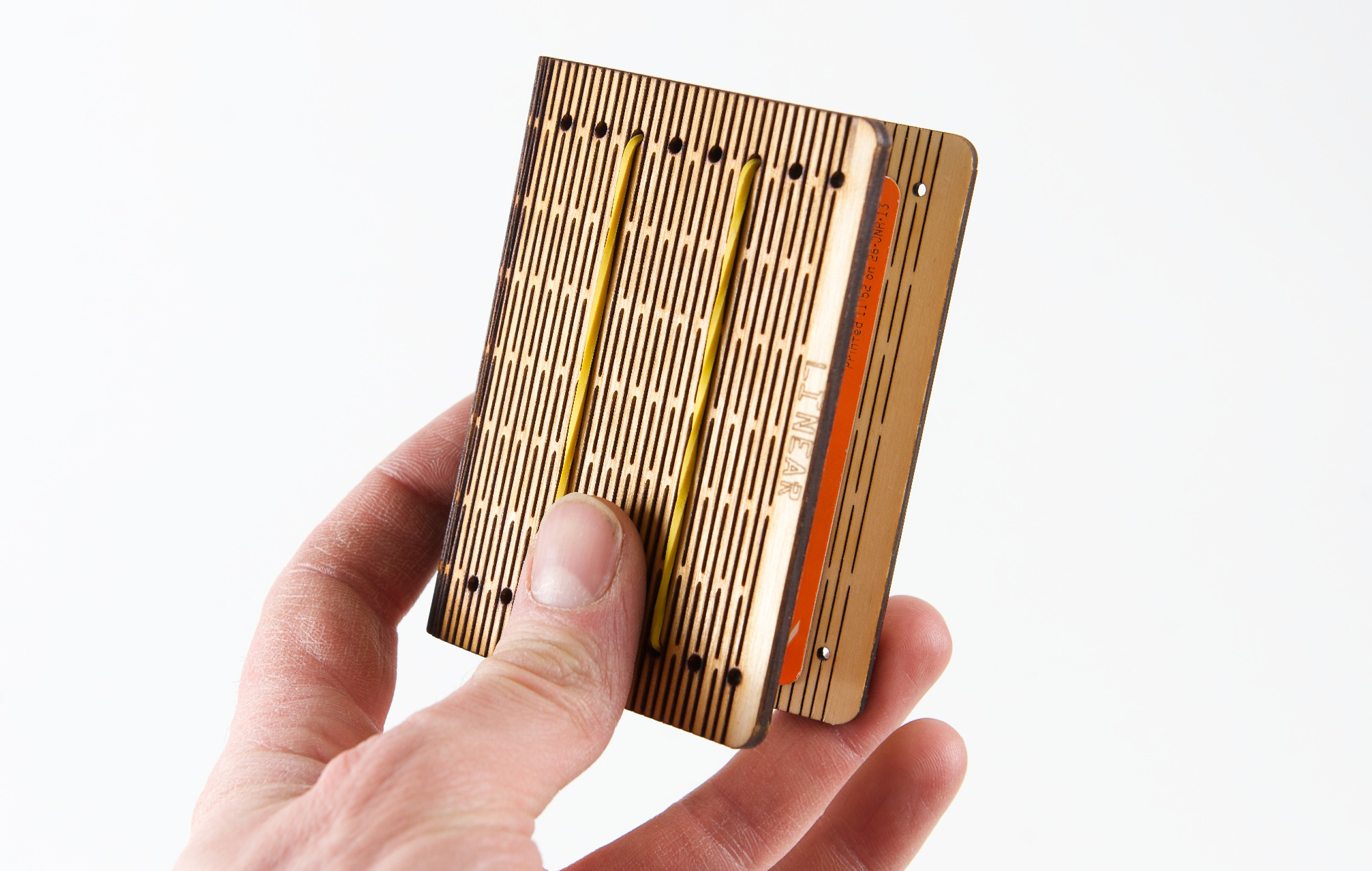
The judges loved the product for its attractive design, choice of material and originality, but unfortunately the design wasn’t robust enough for its purpose. Giles and the team discussed what aspects of the design needed improving and what aspects were successful.
The team then went to do a bit of research in the Designs of the Year exhibition, looking particularly at material qualities – surface, suitability for function and the transformation of a material making it useful for other applications.
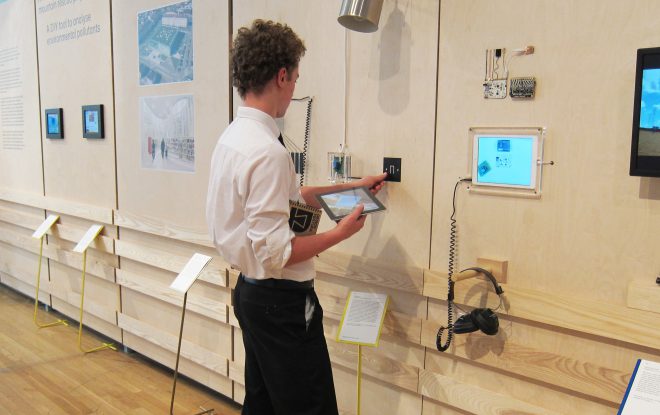
This was followed by a quick ideas session with the team trying to come up with as many solutions as possible in a short amount of time.
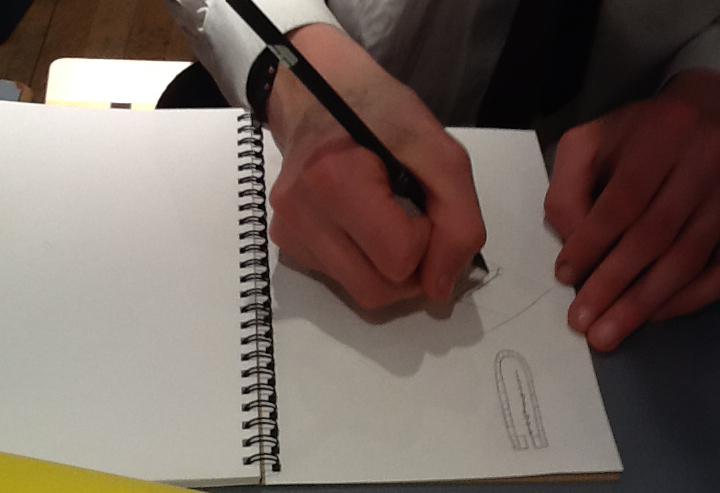
At the end of the day the team had positive ways to take forward their fantastic wallet idea.
Thanks to Giles for giving us his time.
-
Sliderz development
Over 6,000 students in 150 schools across Great Britain took part in the Design Ventura 2013, the Design Museum’s flagship design and enterprise competition.
Students were challenged to work in teams of 4-6 to answer the brief of designing a new product for the Design Museum shop to be sold for around £10.
This is the story of the process of realising the winning concept into a real saleable product.
It all started with the announcement of the winners, Weald of Kent Grammar School on the night of the Celebration and Awards Event.
Getting busier! ##DesugnVentura pic.twitter.com/ORVRfNOfve
— Emilie Harrak (@emilieharrak) February 5, 2014
What a great night we had for #DesignVentura awards and our winners are .. @WOKGS Well done Weald of Kent GS Team pic.twitter.com/PskpfDSNLO
— Design Ventura (@DesignVentura) February 6, 2014
@DesignVentura Superb evening @DesignMuseum,so proud of my daughter & girls at WOK for their winning product #sliderz pic.twitter.com/h5BPB58UPy
— David James Shea (@Sheaman68) February 6, 2014
Was an honour and a blast to be a judge at the inspirational @DesignVentura Awards. Again, congrats to Sliderz! pic.twitter.com/HCJNwhFuhE
— Ohyo (@ohyobottle) February 6, 2014
The team work with product designer Chris Garcin and graphic design studioMultiAdaptor to develop their product.
The first meeting takes place at the office of MultiAdaptor.
Exciting first priduct development meeting for #designventura winners @WOKGS with @multiadaptor pic.twitter.com/drvSOJCGEP
— Design Ventura (@DesignVentura) April 30, 2014
We’re hosting winners from @DesignMuseum‘s learning programme @DesignVentura to discuss development of their product pic.twitter.com/wOx1bYL1DM
— MultiAdaptor (@multiadaptor) April 30, 2014
A new name is needed as Sliderz is already taken. Brainstorming time pic.twitter.com/WqTY9HQSAn
— Design Ventura (@DesignVentura) April 30, 2014
@WOKGS team reviews options that have been presented pic.twitter.com/yxfRXFze2l
— Design Ventura (@DesignVentura) April 30, 2014
Product designer Chris Garcin describes his research into manufacturing the @WOKGS team’s product pic.twitter.com/ua30CPSqbR
— Design Ventura (@DesignVentura) April 30, 2014
Ben gives an overview of @multiadaptor work pic.twitter.com/gY1jaXXL7I
— Design Ventura (@DesignVentura) April 30, 2014
@multiadaptor show some initial packaging ideas pic.twitter.com/E6IXaQUQ8O
— Design Ventura (@DesignVentura) April 30, 2014
Discussing functionality if the product and how this informs the design pic.twitter.com/mIKtXVNYte
— Design Ventura (@DesignVentura) April 30, 2014
-
Design Ventura Pitching Day 2011
The Ventura Team were very impressed on Monday when our top ten schools came in to pitch their products to our panel of judges. Everyone looked smart and had sent in their presentations before the day, so there was time for all the teams to have a short run-through of their pitches and to get some feedback from our volunteers.
The judges; Naomi Cleaver, designer, writer and critic, Alice Marsh from the Design Museum Shop and Christoph Woermann from Deutsche Bank had a tough job choosing which teams to award prizes to, but they have reached a decision and all the prize winners will be revealed at the Celebration Event in February.
-
Dove Bunting nearing completion
The production of Dove Bunting the winning product of the 2010-11 Design Ventura competition has finally got underway and will be in the Design Museum Shop in August. Check out the last meeting the team had with our design mentor Nicky from Build where they made final decisions on samples that Nicky had sourced. We are very excited about seeing the final product!
-
Top tips from lead teacher of the 2010 winning team
Initially advertising for year 9 pupils to enter Design Ventura, Miss King, Head of Design and Technology, offered to “inspire them about the world of design and increase their interest in the subject”. Having sustained an enthusiastic response, the competition kick-started with some off-timetable sessions and a few meetings squeezed in over lunchtimes, nourished with plenty of biscuits and juice to help get the ideas flowing.
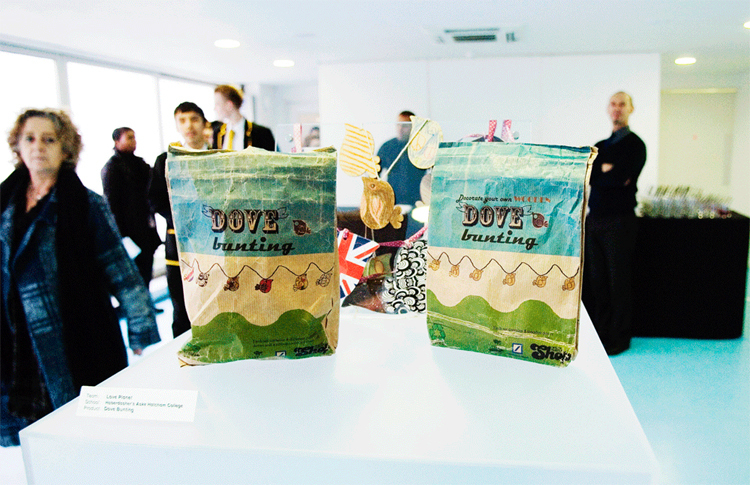
“Overall the students were very engaged in the project and with the visiting experts who came in to the school for the Hothouse sessions. They worked with the teams and explained about the finance, marketing and design elements.” By encouraging the pupils to consider themselves as both young designers and the target market, the students quickly began to develop ideas about what would sell in the Design Museum Shop.
Miss King had a difficult choice to make deciding which idea would progress in the competition, “I really had to consider what we were able to produce in school with the resources that we had available to us”. Taking into account the variety of products already available in the Design Museum Shop, it was concluded that the final submission must be “the most suitable product” and would show careful consideration of the target market, in addition to the issues of affordability and sustainability. Dove Bunting was eventually chosen as the winning product as it held “appeal to a range of ages” and was a memorable item. The Dove Bunting also had a unique selling point, a DIY element that “enabled the person buying it to make it personal to them”, this showed the young designers has shown consideration for the target market and researched current consumer trends. The “simple but very eye catching” packaging fitted well with the sustainability issues within the original design brief.
With a successful and professional performance at the Pitching Event in January Dove Bunting scooped the overall prize and is now in the initial stages of production in preparation for being stocked in the Design Museum shop this August.
“We were really delighted that the product was chosen as the winner of Design Ventura, and the team are now involved with developing the product for production and to sell in the museum shop. The school is very proud of the girls’ success and is celebrating their achievement in assemblies.”
-
News from the Pitching Event 2010

Thank you and congratulations to the 10 teams who presented their ideas at the Design Ventura pitching event on Tuesday 7 December. The schools represented at the pitching event participated in a series of 3 workshops as part of the Design Ventura project. Our expert judges Sebastian Conran, Chris Ruse from Deutsche Bank and Alice Marsh, Head of Retail at the Design Museum Shop, face a very difficult task in choosing the over all winner as the standard of ideas and presentations were exceptionally high. Well done to teachers and students for your incredible effort and amazing achievements on this project.
Virtual Ventura
Our panel of judges also selected winning ideas from Virtual Ventura submissions, and again were really impressed with the standard of ideas. They found originality and marketability in the many competition entries they reviewed.
-
2010 Winners talk through production plans with Build
The winning team of four girls from Haberdashers’ Aske’s Hatcham College have just been for their first meeting with Nicky from Build – the design studio selected to firm up the brief and help bring Dove Bunting into production. With the aim of being on shelves in the Design Museum Shop by August, Love Planet are benefiting from Build’s expert advice, accumulated over 10 years running a successful design studio.
The product, Dove Bunting, had moved on since the competition and the young designers presented Nicky with the latest developments including finer details such as pattern ideas, materials, and packaging design.
The young people suggested re-designing the packaging to convey the story behind the product – essentially to explain their journey from original designs to winning the competition and moving into production. Nicky was keen on this idea as it adds incentive to purchase for potential customers in the Shop.
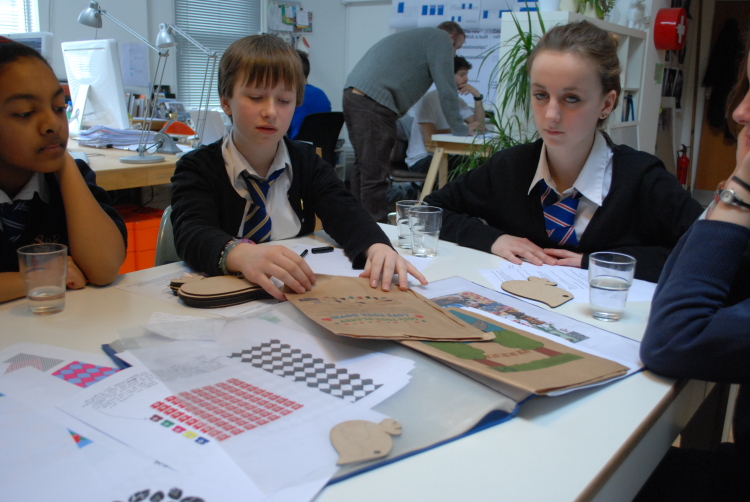
Nicky then discussed the process of designing and advised the girls to start with an ideal manifestation but be prepared to be flexible and adaptable as the realities of manufacturing process and cost come into play. These factors can affect the size, surface decoration and materials of the final product. The young designers have now adapted their plan to include printed wood instead of vintage fabrics as original fabrics can be too costly.
The design team also agreed to re-consider their branding before the next meeting, planning to utilise their creative entrepreneurial skills to match up their product with existing lines in the Design Museum range, ensuring it gains maximum appeal.
The meeting concluded with Nicky and the girls settled on some action points to work towards including sourcing sustainable ribbon samples, finalising dove designs and contacting the charity of their choice to have profits donated to.
-
Winning Product 2010 – Dove Bunting
Our winners for the 2010 Design Ventura competition were Haberdashers’ Aske’s Hatcham College, Lewisham. The brief asked them to design a product for the Design Museum shop to be sold for around £10.
The team designed a kit to make cardboard bunting in the shape of a bird (which was the Design Museum Shop logo at the time), some of which would be blank so that you could get creative and decorate your own.
Here is their submitted entry:
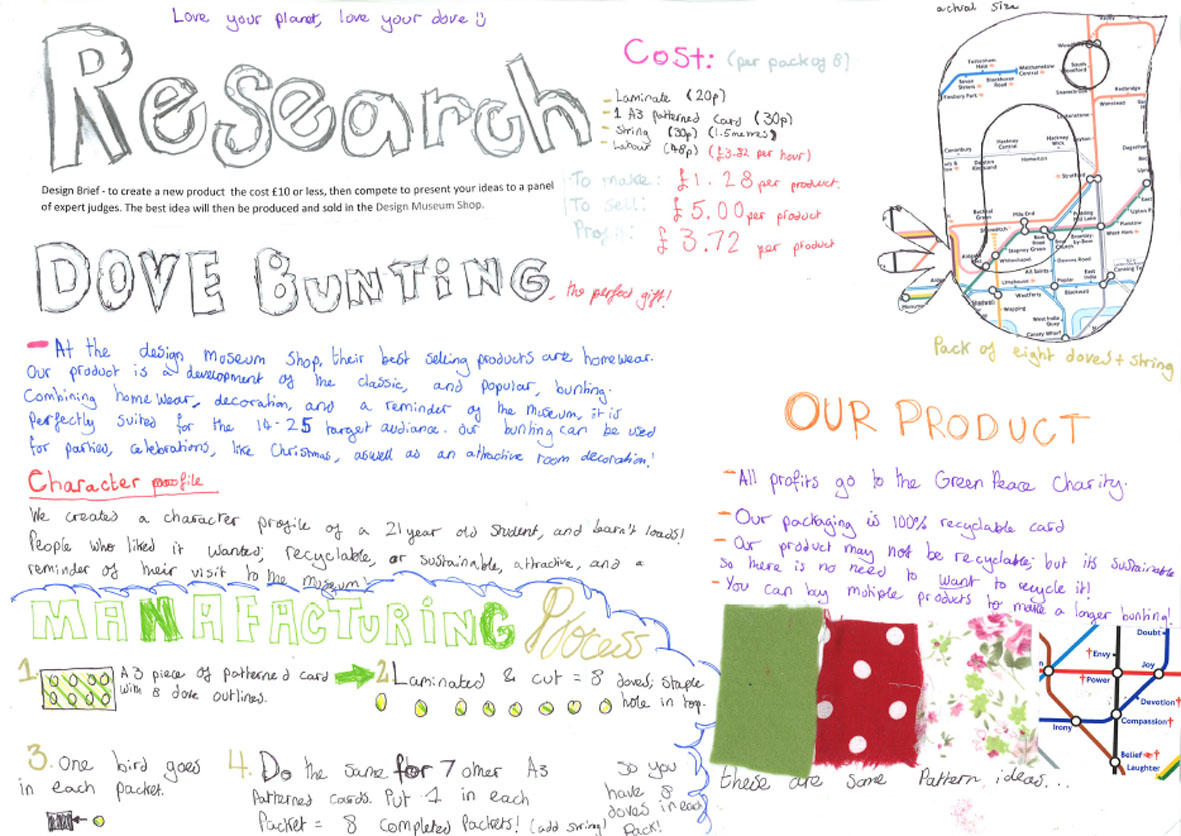
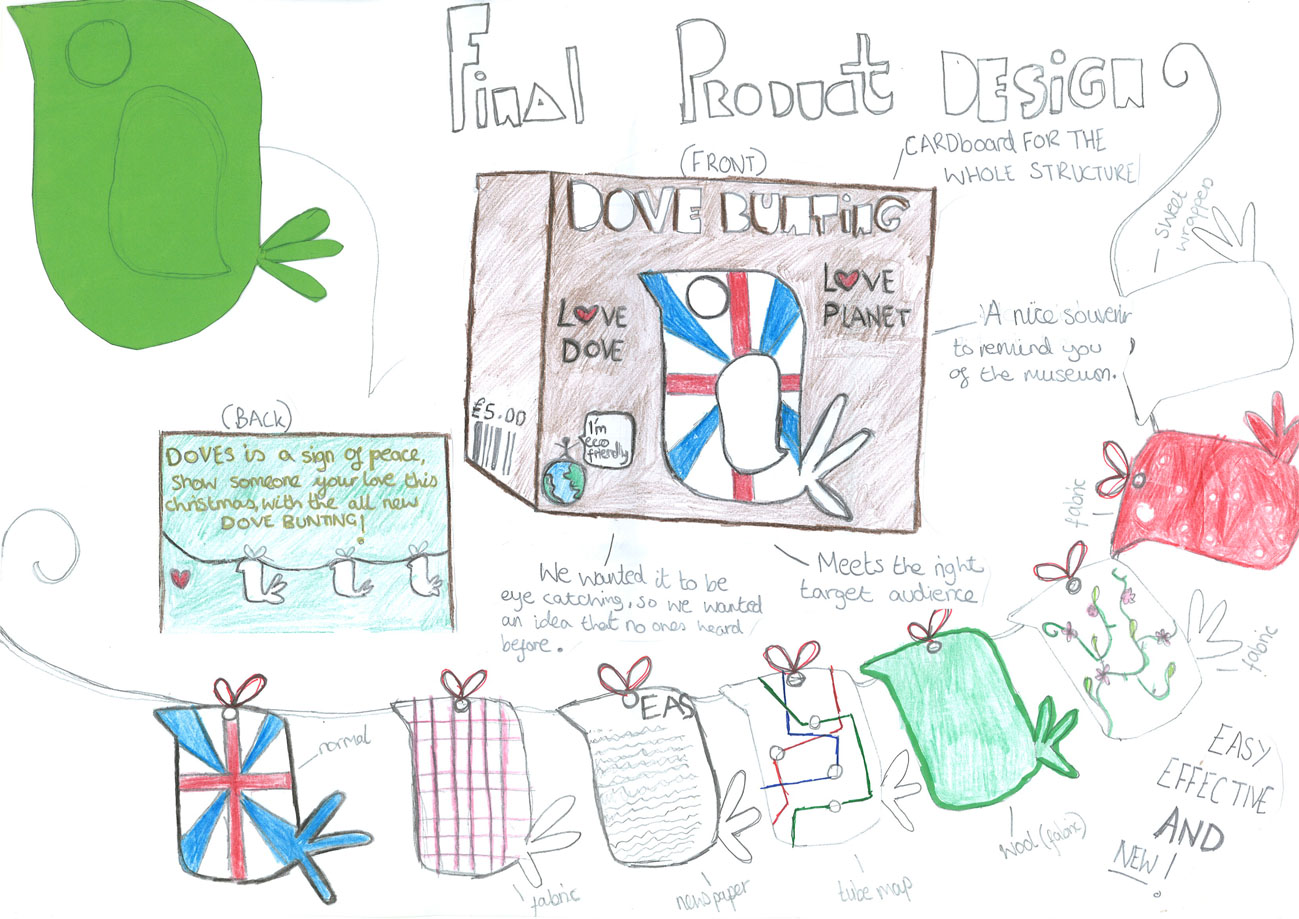
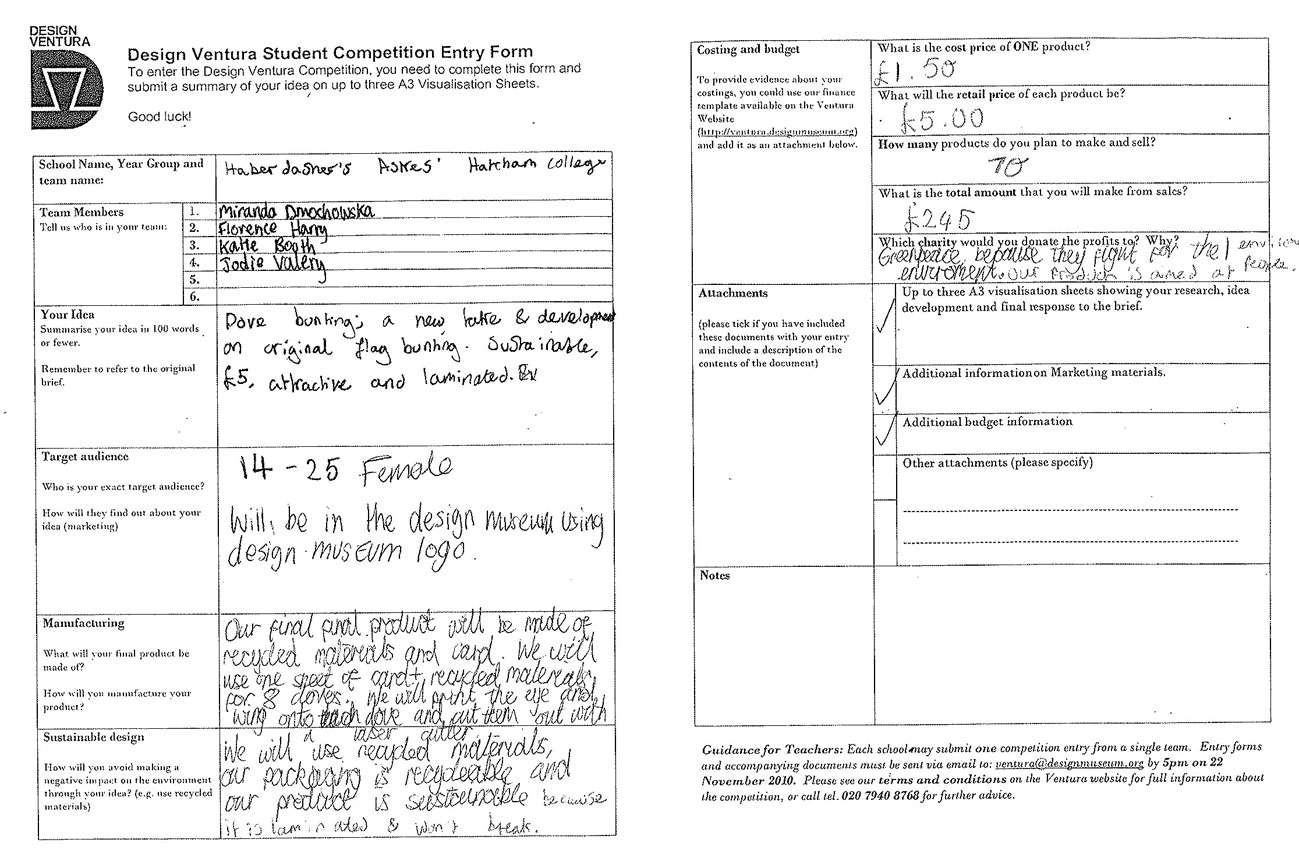
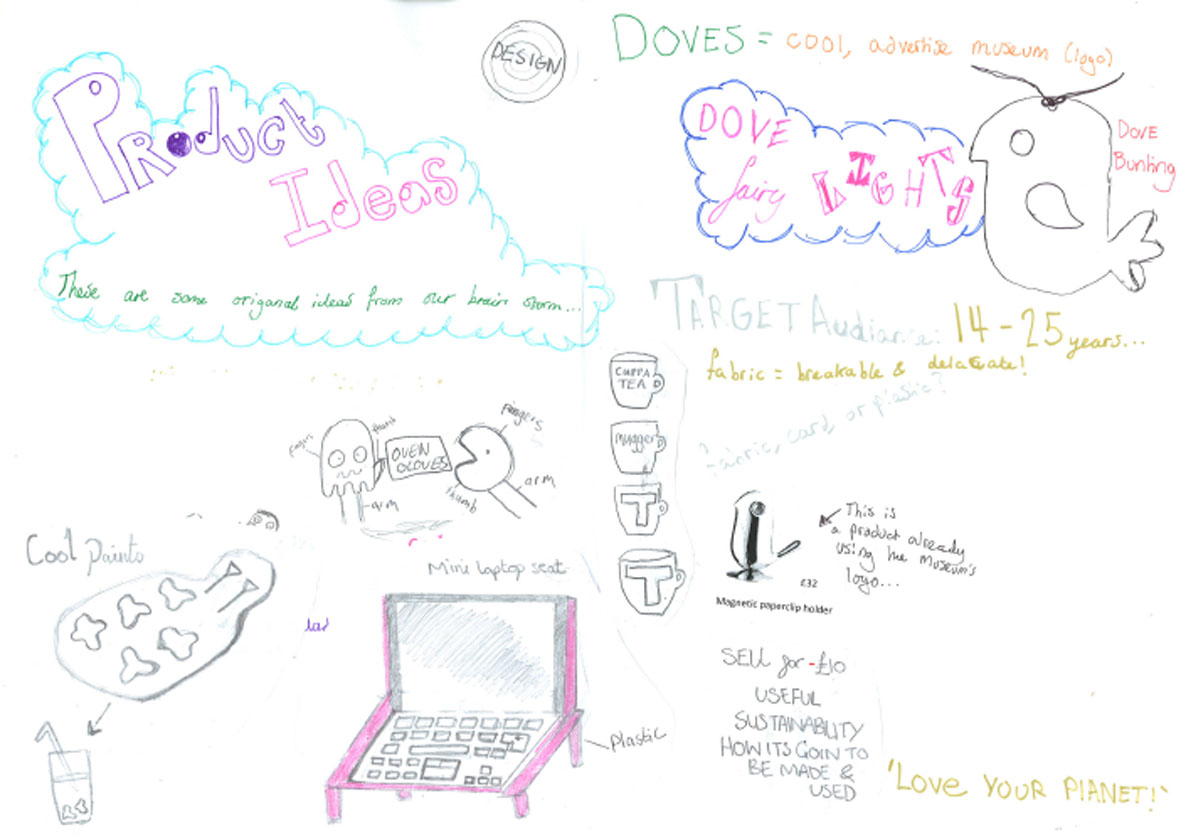
The team then attended the Design Ventura pitching day and presented their idea to the panel of judges.
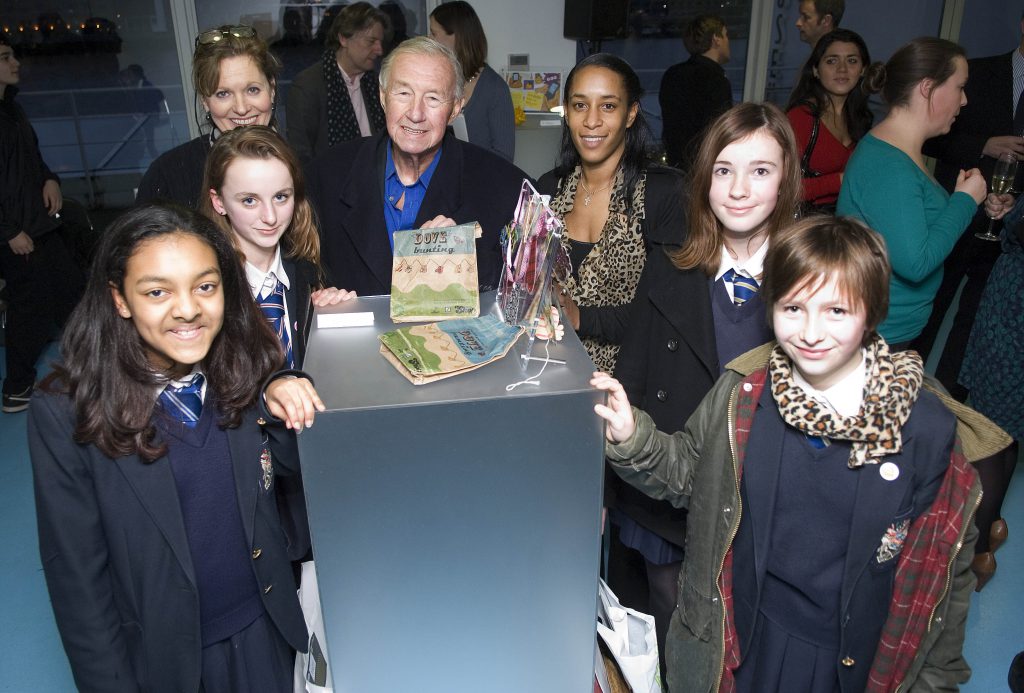
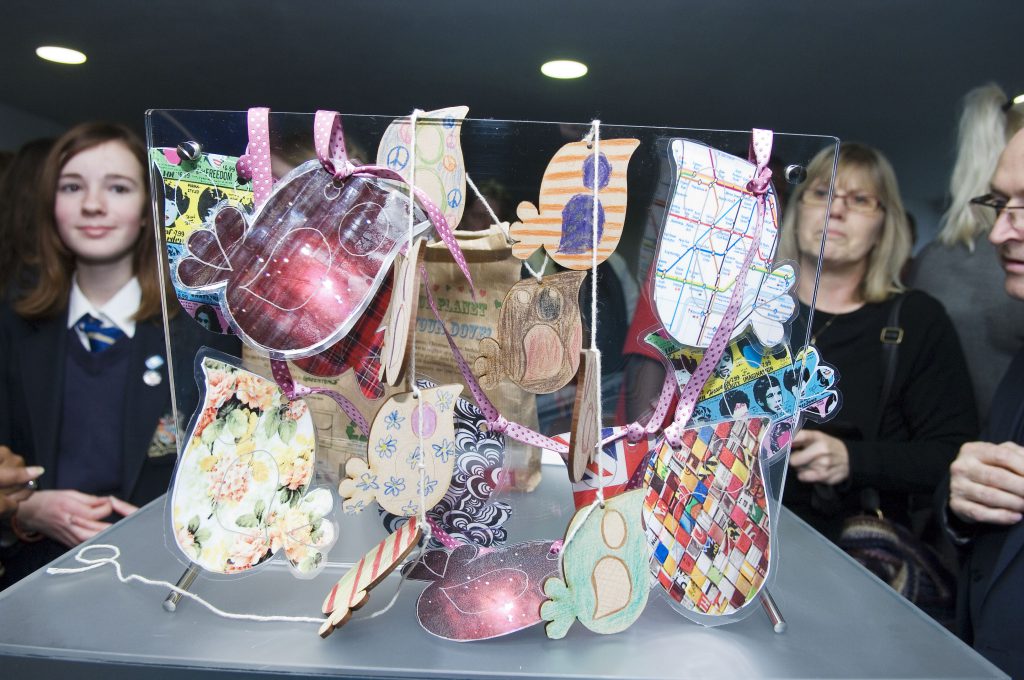
On 27 January 2011 the team were presented with the top prize at the Celebration Event (see above), they went on to work with design practice Build to develop Dove Bunting into a market ready item.
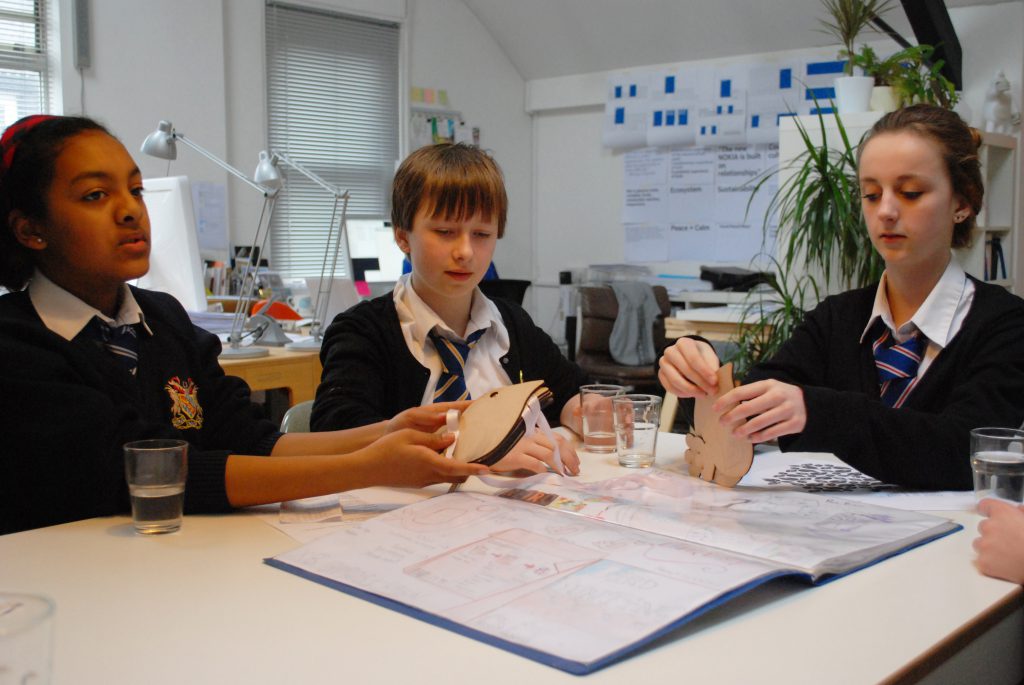
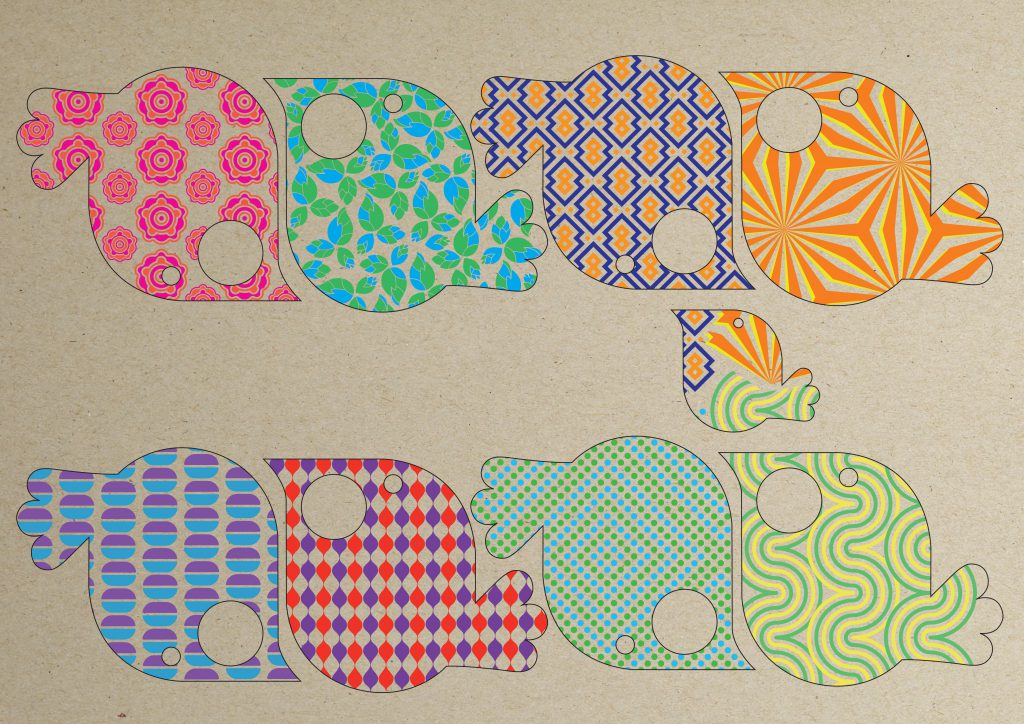
In July it all came together in a production line to package the product ready for sale in the Design Museum Shop:
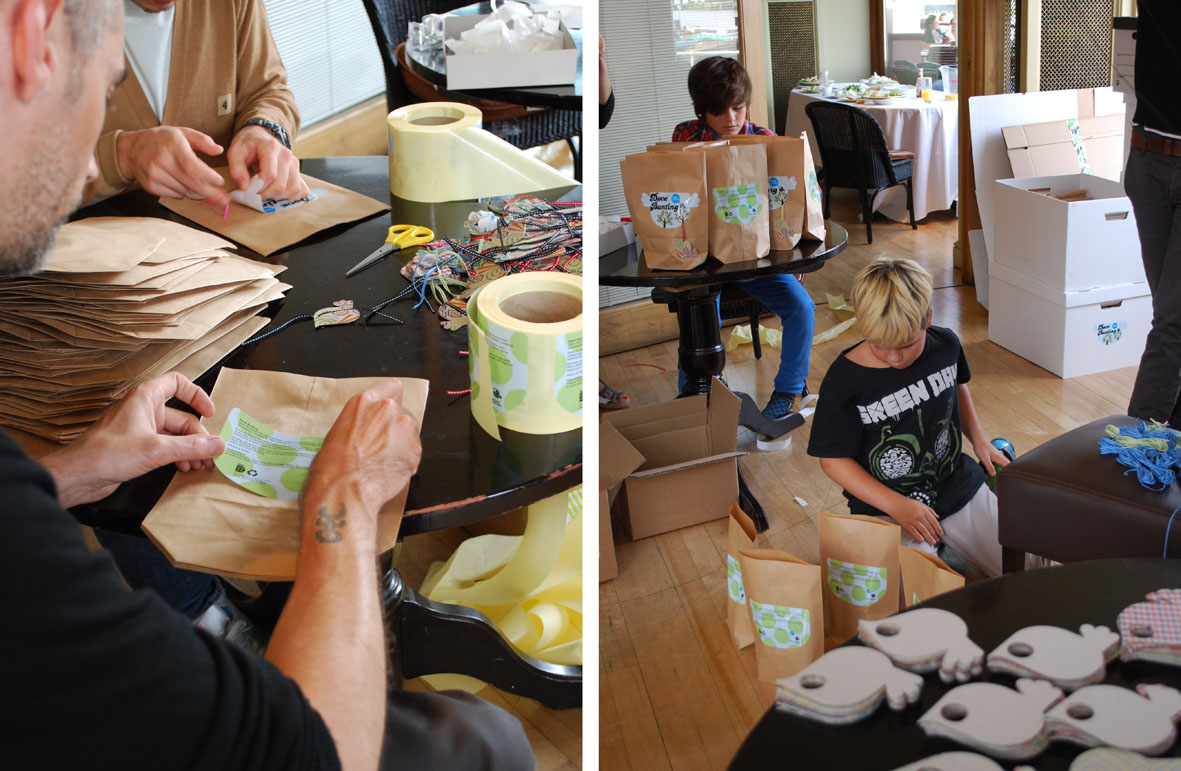
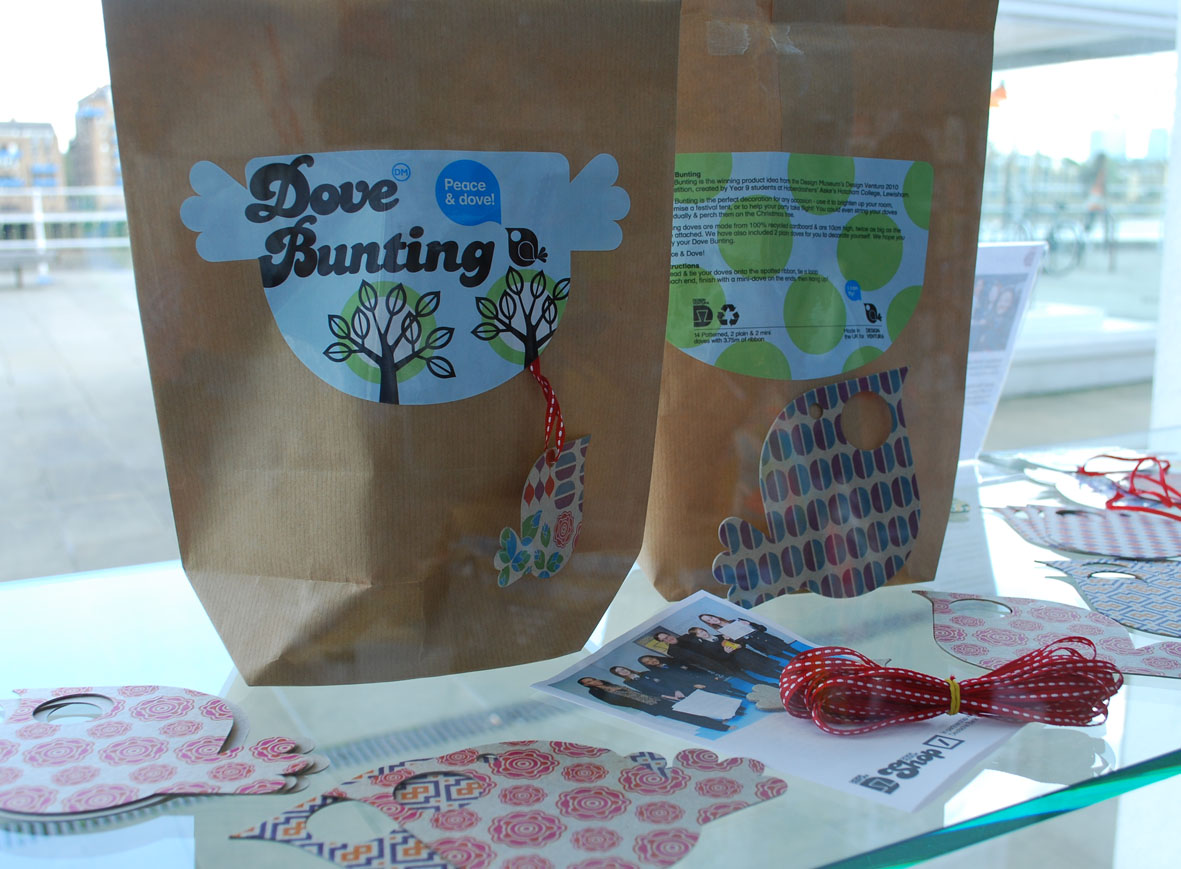
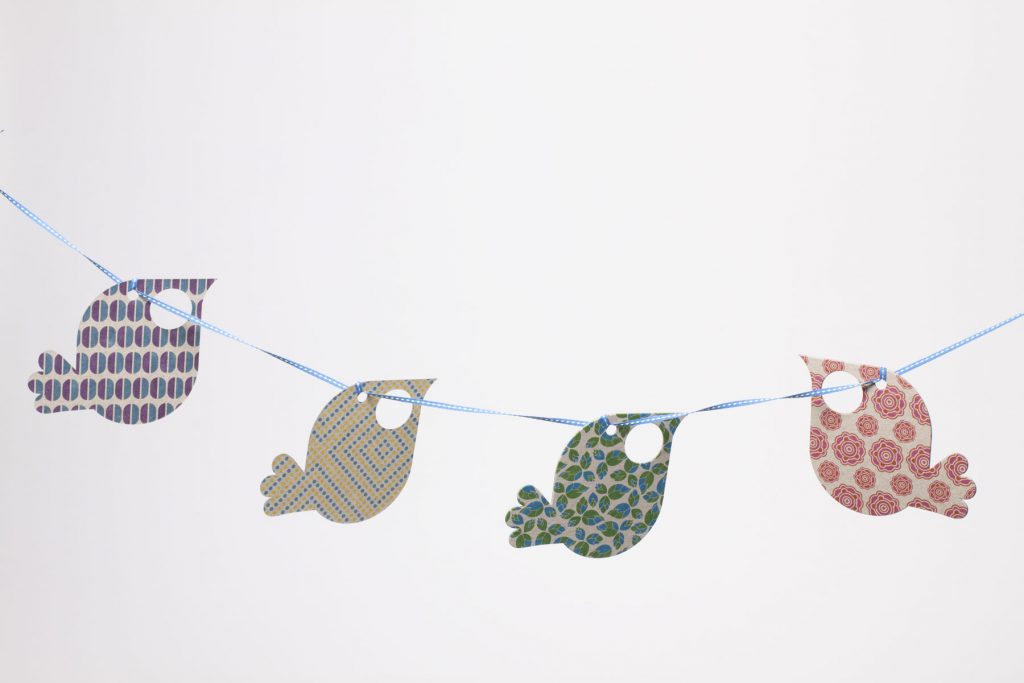
At the 2011 Celebration Event the team came back and presented a cheque for £1141.00, the profits from the sale of their product, to a representative from their chosen charity, Greenpeace.
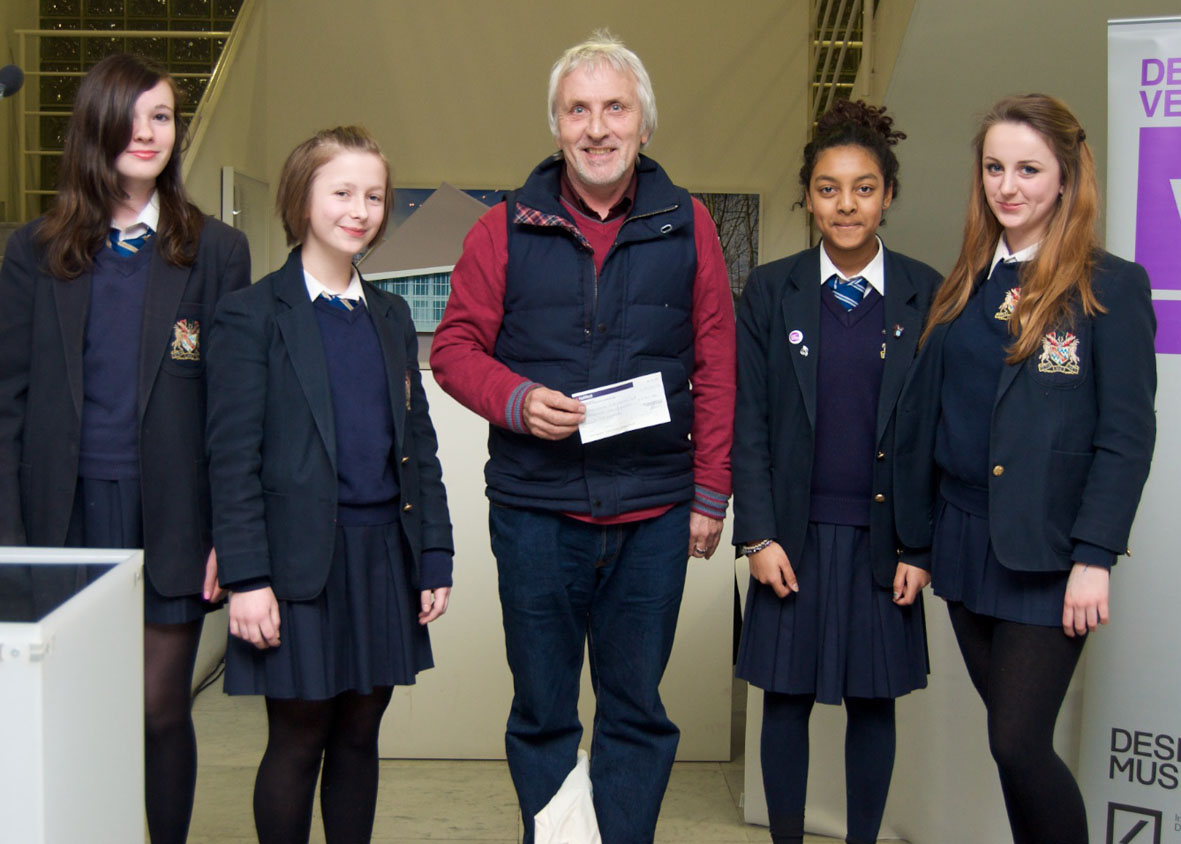
-
First mentoring meeting for Dove Bunting
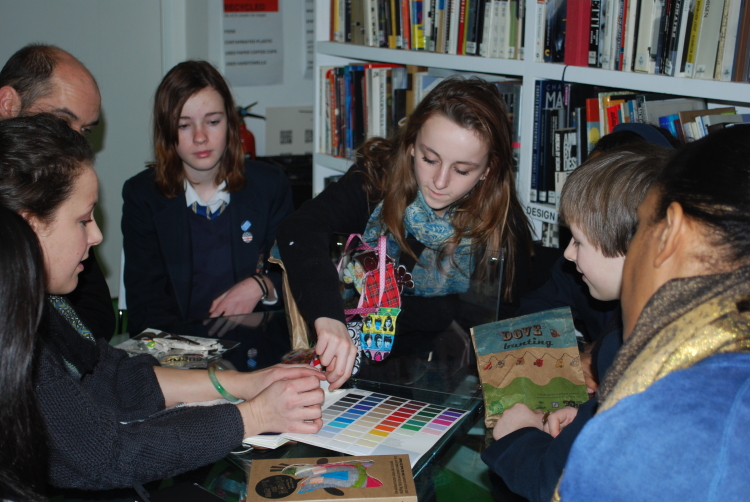
A quick snap shot of Love Planet’s first meeting with their new Design Museum mentors, Steven Preston the Retail Operations Manager, and Alice Marsh, Head of Retail.
On 15 February, the girls from Haberdashers’ Aske’s met at the Design Museum to begin planning the production of Dove Bunting. Having won first place in the Design Ventura competition in January, team Love Planet have been granted a £1000 bursary to put their designs into production and will be sold in the Design Museum Shop from August this year.
Watch this space to follow their progress.


